

1.
George Washington Green, son of Patrick Green
and Margaret Green, was born on 6 Aug 1788 in
Norton House, County Cork, Ireland.1
George married Mary
Coghlan, daughter of Joseph Coghlan, on
10 Dec 1805 in Youghal, Cork, Ireland.1
Mary was born on 25 Nov 1789 in Youghal, Cork, Ireland.1
Children from this marriage were:
+ 2 M
i. Joseph
Coghlan Green 5
was born on 17 Apr 1807 in Youghal, Cork, Ireland and died on 6 Nov
1875 in 17 Princess Street, Northampton 4,6,7
aged 68.
3 M ii. William Green was born
in 1809 and died on 3 Aug 1830 aged 21.
4 F iii. Theresa Green .
Theresa married John Rundle Foley.

 Second
Generation
Second
Generation 
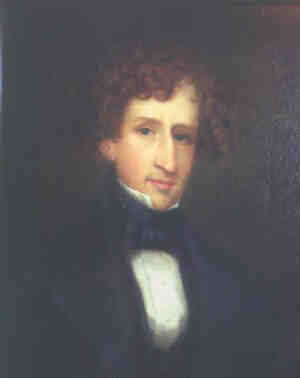
2. Joseph
Coghlan Green
5
was born on 17 Apr 1807 in Youghal, Cork, Ireland and died on 6 Nov
1875 in 17 Princess Street, Northampton 4,6,7
aged 68.
Nothing
is known about Joseph's early education but according to his grandson,
Dick Green's account, Joseph came to England in c. 1825 to train as a
surgeon at St Thomas's Hospital and at the North London School of
Medicine and it is certainly true that a medical book, "The Dublin
Dissector" has survived with his signature and the words, "North London
School of Medicine" in its flyleaf, but the edition was not published
until 1836.
Sadly, St Thomas's Hospital has no record of Joseph
being a medical student there and there is no evidence of there ever
having been a North London School of Medicine. There was, however, a
North London Hospital, which opened in 1834, that had a school of
medicine but it was renamed University College Hospital in 1837. If
Joseph had come to England in c. 1825, 1836 seems rather too late a
date for him to have been a pupil there.
Dick Green's account
continues by saying that when Joseph finished his pupillage, he went
out to Barbados and became a planter there growing sugar and ginger.
This, if it is true, seems a strange thing to have done and, moreover,
it is unlikely that Joseph could have afforded to have been a planter
except as an employee. Some years later, Joseph is said to have
returned to London and started to practice there before moving to
Towcester. There may be some grains of truth in this account but it
does not really explain why Joseph should have been involved with the
"North London School of Medicine" sometime between 1836 and 1837.
One
could construct another version of Joseph's early years that, in many
respects, fits more closely with the few facts and stories about him.
In this version, Joseph leaves Youghal sometime in his late teens and
makes his way to Barbados. Perhaps, he works his passage there by
assisting the ship's surgeon and learns some basic skills, which he
later uses.* Once in Barbados, he is employed in one capacity or
another by a plantation owner for a few years, possibly as a medical
attendant, before returning to Great Britain in the mid-1830s. On his
return, Joseph decides to further his training as a surgeon and becomes
a pupil at the newly opened North London Hospital or, alternatively,
secures a position there in some assistant capacity. Given Joseph's way
with money (see later) and the cost of pupillage**, the latter seems
more likely but both explanations would account for why Joseph
possessed the medical book mentioned earlier.
Whatever the case
may be, we do know from a quite detailed account of his activities
prior to his bankruptcy in 1847 that he did work in London and in
Northamptonshire prior to that date in various capacities. The account
comes from an advertisement regarding his insolvency in the London
Gazette in May 1847; by the time it was published, Joseph was a
"Prisoner for Debt" in Northampton Gaol.
Sadly,
this account of Joseph's activities has no timescale but we do know
that he was in London in 1840 because it was in that year his
compatriot Daniel Byrne*** painted a miniature
of him a copy of which is shown above. Also, the 1841 census tells
us that he was lodging at a coffee house in St Martin's Lane, which is
mentioned.
It remains a mystery as to why Joseph went to work in
Towcester or how his bankruptcy was eventually settled. Also, it is a
matter of speculation as to whether or not it was the latter event that
caused the reported rift between him and his father.
After his
bankruptcy was discharged, Joseph spent the next 9 years or so
practising in Towcester as a surgeon or general practitioner (he
described himself as such at the time of the 1851 census) and, after
his marriage, also, as an agent for The Norwich Union Fire Insurance
Company and The New Equitable Assurance Company. The idea of being an
insurance agent may well have come from his brother-in-law, George
Henson, who was married to Amelia's elder sister Ann. George was,
amongst other things, one in Towcester in the early 1850s and went on
in later years to be the manager of a life assurance company's office
in Birmingham.
Local surgeons in Joseph's day were the accident
and emergency service in their community dealing with the dreadful
injuries that regularly occurred in a world much less concerned about
safety than it is today. Indeed, it is probable that most of Joseph's
surgical work involved injuries of one sort or another. An illustration
of the type of case he had to deal with comes from a newspaper report
of an 1852 court case in which a gardener was suing for damages after
being violently assaulted, in error, by a policeman with a truncheon.
Joseph's evidence is reported thus: "I am a surgeon of this
town. I
attended Atkins [the plaintiff] after Maddox [the defendant] struck
him. His eye was protruding from the socket and his face much swelled.
He was very sick at the stomach through it. I had to stop that, and
reduce the swelling, and get the eyeball back into its socket. After I
had reduced the immediate necessities of the case, I held a
consultation with another surgeon. I considered this absolutely
needful. His left eye is quite destroyed, and the right one, in
consequence, double visioned. It is likely to continue so, and to
become worse. The injury was inflicted by a straight below. It was a
single blow, making an incision in the skin, and erasure [the removal
of tissue], and causing internal injury. It might have produced serious
ulterior consequences, if every precaution had not been taken."
Atkins was seeking £50 in damages but was only awarded £5 and costs.
In the mid 1840s, Joseph seems to have joined the Baptist Church in
Towcester for its Church Books contain the following record:
Joseph Green Baptised by J Davis 5.3.1846. Withdrawn
3.11.1848. Gone to Independents.
The
Independents were an offshoot of the Baptist Church and it is likely
that congregation in Towcester included the Kirby family as it was in
the Independents' Chapel there that he and Amelia Kirby were married.
Joseph must have later become discontent with the Chapel's congregation
as he joined the congregation of another Baptist offshoot in the town,
the North End Chapel, nine months or so after it opened in October
1853. Interestingly, the Church Books of that Chapel have survived and
contain the following record:
Joseph Coghlan Green received
into fellowship with the Church at Towcester July 2. 1854. He having
been previously baptised, was received by the ordinance of laying of
hands by S. Sheppard [Pastor Samuel Shepherd]
J. C. Green
separated from the church 1856 for not giving satisfactory explanation
respecting defaults in his accounts as Collector of Rates.
It
is interesting to speculate whether or not Joseph's separation from the
congregation of North End Chapel, or the events surrounding it, had
anything to do with the family's move to Northampton in the closing
months of 1856 or early 1857. Certainly, it would have been difficult
to continue a surgical practice or sell insurance in the town with the
suggestion of malfeasance hanging in the air.
In Northampton,
the Greens settled in Princess Street (also referred to as Prince's
Street), where they occupied No. 17, an 8-roomed terraced house, for 40
years or more, both Joseph and Amelia dying there. Princess Street was
situated on the northeast side of the Market Square and, throughout the
years that the Greens were there, it was mainly occupied by artisans.
No. 17 was one of the largest houses in the street and the Greens had a
lodger for many years; it was also only two doors away from a Baptist
Chapel and some years later, more or less opposite the new Masonic
Hall. The Street no longer exists as it was demolished along with
others in the late 1970s to make way for Northampton's Grosvenor
Shopping Centre.
Joseph seems to have given up being a surgeon
on leaving Towcester though he does describe himself as a "dispenser of
medicine" at the time of the 1871 census so it may be that when his
health began to fail him (he gave up insurance work at the end of the
1860s) he earned a little money as a chemist.
No explanation has
been passed down of Joseph's retreat from surgery but it may have come
about on two accounts. The first is that Northampton was much better
endowed with surgeons than Towcester (there were only four surgeons and
no hospital in Towcester in the late 1840s, a situation that persisted
into the 1850s) and Northampton also had a well-established general
infirmary, so it would have been quite difficult to establish a
practice from scratch. The second being that the difficulties in
getting a practice started were compounded in Joseph's case by the
Medical Act of 1858*** that, inter alia, prohibited unqualified members
of the profession from representing themselves as qualified doctors or
surgeons.
Interestingly enough, Joseph must have become known to
members of the medical profession in Northampton because there is a
newspaper report of him being one of the guests at a luncheon in 1865
given by the outgoing president of the South Midlands branch of the
British Medical Association.
Joseph's grandson Dick Green writes of him as being, "…
extremely sociable and perhaps was happiest when with a crowd of men…";
attributes that would have equipped him well for the role of an
insurance agent. It is not surprising, therefore, that his name or at
least someone referred to as "J. C. Green", also crops up quite
regularly in other local newspaper reports. These reports cover a
number of things: an appointment as a corporal in the newlyformed 4th
Northampton Volunteer Rifles Corps in 1860 and later promotion to
sergeant; various events in connection with St. Sepulchre's Church****;
on parade with local Freemasons (as a senior deacon)***** on the
occasion of the laying of the foundation stone for the new Town Hall;
and a Mayor's Dinner. Of course, not all of these reports may refer to
Joseph but as they only arise during the early years of the 1860s, it
is quite likely that some do.
There are, however, numerous
newspaper advertisements that mention Joseph specifically as an agent
in Northampton for several of the well-known insurance and life
assurance companies of the day and it is clear that during the 1860s
being an insurance agent was his only occupation. His business seems to
have peaked in 1865 and ceased by 1870.
If Joseph made much
money from his work as an insurance agent, little of it can have been
saved because he did not leave a Will. He is said to have been
extravagant (cf. his earlier insolvency) but the likelihood is that
most of it probably went on daily living and, perhaps latterly, towards
the education of his children and the apprenticeship fees for his two
sons.
* Many surgeons in the first half of the 19th century
learnt their skills aboard merchant or Royal Navy ships or in the Army.
**
The Medical Almanac of 1835 lists the following annual fees for pupils
at St Thomas's: Attendance at lecture — 3-5 guineas; Library
use — 1
guinea; Surgeon's pupil — 25 guineas. Pupils usually
trained for two years.
*** Daniel Byrne was an Irish artist born
sometime around 1816. He was lodging in Southampton Street, Marylebone,
at the time of the 1841 Census.
**** This Act, which had been
long sought by the qualified section of the profession, did not
prohibit unqualified practice in medicine. The most it did in this
direction was to provide a fine of £20 on any person who falsely
represented himself as a qualified practitioner, and to lay down that
only those whose names were on the Register could take up a medical
appointment under the Crown. In fact, the Act limited itself to the
prohibition mentioned above and the creation of a General Council of
Medical Education [later to become the General Medical Council].
However, the Act did make it much more difficult for unqualified
persons to continue to practice.
Prior to the Act, according to
the 1841 Census, there were some 33,339 persons practising one or more
branches of medicine. The medical directories for London and the
Provinces in 1853 listed only 11,808 qualified practitioners (licenced
by a college), so approximately two thirds were qualified only through
experience. Most of the latter called themselves surgeons and had
received their training through a two-year apprenticeship attached to a
senior, qualified surgeon at a teaching hospital or through service
aboard ship or in the Army or Navy.
***** St. Sepulchre's Church
was Joseph's parish church and it may be that, having fallen out with
The Baptists in Towcester, he joined the Church of England congregation
there on moving to Northampton.
****** Several books belonging
to Joseph have survived on the history of Free Masonry, which suggests
that he had an interest in the Masonic movement. 9,10,11,12,13,14,15,16,17,18,19,20,21,22,23,24,25,26
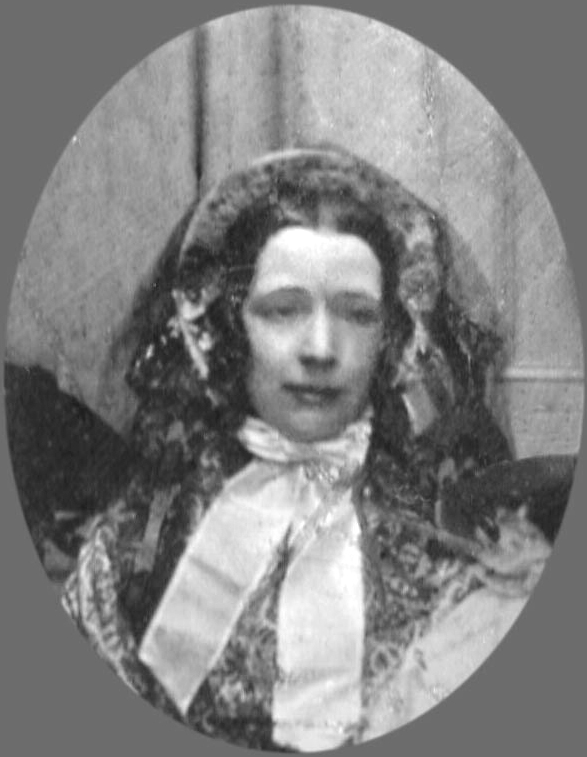
Joseph married Amelia Catherine Kirby, daughter of John Malsbury Kirby and Ann Elkins, on 26 Mar 1849 in Independent Chapel, Towcester, Northamptonshire.27 Amelia was born on 20 Nov 1826 in Paulerspury, Northampton,28 was baptised on 13 Jan 1831 in St James the Great, Paulerspury, Northants,29 and died on 9 Apr 1901 in 17 Princess Street, Northampton 30 aged 74.
It
is somewhat surprising that Amelia's grandson, Dick Green,
has so little to say about his
grandmother despite the fact that she lived until he was nearly
21 years old. He does, however, mention that her parents had once lived
at Pury Lodge in Potterspury, a former Royal Hunting Lodge in
Northamptonshire. An incorrect claim, as it turns out, it was her
mother's family the Elkinses, or some members of it, who had farmed
there for a short while in the early 1820s.
Amelia was the second daughter (and child) of Malsbury and Ann. She
was born and brought up in the village of Paulerspury where her family
lived until she was about 10 or 11 years old.
Her father was a
tenant of the Earl of Pomfret's Paulerspury estate and farmed about 90
acres in the parish. Three years before Malsbury died in 1837, his
father Thomas predeceased him, leaving Malsbury and his two older
brothers a 1/3 share each of a 151-acre
farm at Upper
Weedon Beck, a village about 15 miles north of Towcester towards
Daventry, and of c. 29 acres of land and some buildings at Collingtree,
a hamlet south-east of Northampton. Thomas had purchased the former and
the latter had been bequeathed to him by his uncle William
Kirby of
Livingstone Lovell who had acquired it through his marriage to Sarah
Cockerill.
As Amelia's mother and siblings
were living in the High Street in Towcester in the summer of 1841, the
family cannot have stayed very long in Paulerspury after Malsbury's
death. This probably means that Amelia's early education was in that
village followed by a period in Towcester and, though she did not admit
to any employment at the time of her marriage, it may well be that her
mother's financial circumstances required her to work at some stage.
In
his Will, her father specified that his interest in the two properties
mentioned earlier should provide an annuity of £30 for her mother
during her lifetime and on her death, Amelia and her siblings should
share in the properties equally. Additionally, as neither of Amelia's
Kirby uncles had children, she and her siblings benefited in a similar
way from them in respect of the Collingtree property - her two brothers
were left the uncles' share of the Weedon Beck property. As a result,
by the time Amelia was 21 years of age she was in a small way, the
heiress, or potential heiress, to one sixth of the income and capital
from these legacies. In the circumstances and, presumably, in the
knowledge of Joseph's financial problems a year or two earlier, it is
not surprising that Amelia was encouraged to protect her inheritances
when she agreed to marry him, which explains the "marriage settlement"
that they entered into prior to their wedding of which a copy has,
fortuitously, survived
In
the 1840s, Amelia's family was considered part of the gentry in
Towcester and was well connected in the town with various professional
families, so in normal circumstances Joseph would have been considered
a suitable husband for her. However, it is unlikely that his insolvency
in 1847 had escaped the family's notice and, doubtless, that would have
caused them to have reservations about him whatever the explanations
(and one feels they would have been good ones) he put forward for it.
This rather leads one to suspect it was Amelia's love for this rather
charming and companionable Irish surgeon that carried the day.
The
"marriage settlement" that Amelia and Joseph entered into was not
really a settlement in the true sense of the word, save that it gave
Joseph the right to receive income from the properties in the event of
Amelia predeceasing him. What it did was put all Amelia's assets into
the hands of two trustees with powers for them to manage those assets
and pay the income arising to Amelia during her lifetime or to Joseph
as above; their surviving children being the ultimate beneficiaries.
Amelia’s share of the assets bequeathed by her uncle Edmund Kirby were,
of course, not included in this settlement and it is to be supposed
that, when they came to her following her Aunt Mary's death in 1865,
they fell under Joseph's control as was then usual.
At
some stage, Joseph must have felt that Amelia would be unhappy about
marrying a man who was nearly 20 years her senior so he must have
deducted 10 years when disclosing it to her. As a consequence, his
stated age at the time of their marriage is 31 and, for one reason or
another, it seems he had to keep up that deception in the three
censuses that followed. Clearly, Amelia eventually discovered a truer
date for his birth as his gravestone shows.
It
is probable that Amelia's capital and income kept the family afloat and
paid for most of Eli and Edmund's schooling and apprenticeships. It is
not clear how the "marriage settlement" unravelled though we do know
that the trustees sold off some part of the assets in 1867 and that by
1897, what was left amounted to £1000 invested in securities, which
matured that year.
By 1897, Amelia's son Eli was the only
trustee, the original ones and a replacement for one of them having
died, and he was advised by his mother's solicitor, Mr A. E. Greville*
of Towcester, to invest the £1000 in some 5% debentures of a
newlyformed company, which, through Mr Greville, he duly did. It later
transpired that Mr Greville had a personal interest in that company. In
1905, the company was dissolved and Mr Greville then recommended
putting the £1000, which was then, supposedly, in his hands, into
similar debentures of another company in which, it also turned out, he
had an interest. By this time, of course, Amelia had died and the trust
monies had passed to Eli and his sister Kate. In 1913, the second
company became insolvent and, this time, the £1000 and some month's
interest were totally lost. By then, of course, Eli had died and in
1914, his wife Alice, as his sole beneficiary, unsuccessfully sued Mr
Greville in the High Court for the £1000 and interest.
In reference to this case, Amelia's grandson Dick writes rather
imprecisely, "my
grandmother Green's lawyer, Greville, was kin to her on the Kirby side
but I am sorry to say, although it is too long a tale to tell here,
that Greville proved himself a rascal in that, due to his deceit, he
was the direct cause of my grandmother losing what was her marriage
settlement of two thousand pounds."
Apart from the income
from the settlement money, which would have brought in £50 per annum in
her later years, Amelia could not have had very much other income as
the gross value of her estate on her death was £360. She did not leave
a Will and the administration of her estate was taken over by her son
Eli.
Dick
Green writes
that when his grandparents lived in Towcester they occupied a large
house opposite The Pomfret Arms in the High Street. In fact, the 1851
census, which took place shortly before Eli was born, shows them living
at the south end of the town, on the south-west side of the High
Street, five houses up from the Towcester Almshouses but they could, of
course, have moved subsequently.
It is surprising that none of
Joseph and Amelia's children were given any of the Green family names
like Patrick, George, Margaret or Mary. Instead, Amelia's Kirby and
Elkins family names were used. This rather suggests that by 1850,
Joseph had dissociated himself from his family in Ireland, no doubt on
account of the schism between him and his father, and wished not to be
reminded of them.
It seems likely that, despite Amelia's
marriage settlement trust, the family were never very well off.
However, when in Northampton they lived in a reasonably part of town,
educated their two sons (nothing has been discovered about Kate's
education) at the leading local schools and placed them in suitable
professional pupillages, if only initially, in Edmund's case. Moreover,
in their early days in Northampton, when these things were still
recorded, they were numbered among the town's gentry. 5,31
*
Arthur Edwin Greville (1847-1918) was a second
cousin of Amelia's through her grand aunt Charlotte Kirby (1777-1872)
whose bachelor son, John Malsbury Cooke, was for many years the Kirby
family's solicitor in Towcester. Arthur followed his uncle into the
legal profession there and at some stage became Amelia's solicitor.
Arthur
seems to have been a rather larger-than-life character and there are
many reports of his activities over the years in the Northamptonshire
newspapers. His legal work was not without controversy as some of these
reports attest but that may have been because much of his energy was
expended elsewhere as the report in The Times,
following his death, shows.
A
correspondent writes: - Mr. Arthur E. Greville, solicitor, who died at
St. Helens, Isle of Wight, on Christmas morning, aged 72 years, was
formerly in practice at Towcester, Northamptonshire, and at Staple Inn,
London. He was the inventor of the Greville electro-thermic treatment,
which is still in use at Harrogate, Bath, and Buxton. Science was his
hobby, and as the outcome of experiments made in workshops attached to
his isolated island residence, the Ferry House, at the Duver, St.
Helens, he rendered assistance in defence against hostile submarines
and aircraft. He made many experiments years ago with man-lifting kites
and captive balloons, and had made successful balloon ascents over the
Alps. 9,32,33,34,35,36
Children from this marriage were:
5 M i. John Malsbury Kirby Green
37
was born in Jan 1850 in High Street, Towcester 37
and died on 27 Nov 1850 in High Street, Towcester.38
+ 6 M
ii. Eli
Thomas Elkins Green was born on 24 Jun 1851 in High
Street, Towcester,39
died on 21 Apr 1906 in 3 Grange Terrace, Sunderland, Co. Durham 40
aged 54, and was buried in Bishopwearmouth Cemetery, Chester Road,
Sunderland.
7 M iii. Edmund Kirby Green
was born on 9 Jul 1852 in High Street, Towcester 42,43
and died on 10 Jun 1882 in 17 Princess Street, Northampton 44
aged 29.
Not
very much has been discovered about Edmund's relatively short life. It
is quite likely that he followed in Eli's footsteps as far as his
schooling was concerned. Certainly, he ended up at Abington House
School because he was awarded a prize* for English when in Class 4.
That was given at "Xmas 1870", which was probably the end of his last
term there. There is no record of him having achieved any success in
the Oxford Local Examination as his brother did.
By the spring
of 1871, he was a pupil dentist, presumably, also with Henry Heygate
Goddard, like his brother. At that time, he had probably just started
his dental apprenticeship and it seems likely that he never finished
it, as sometime during the 1870s he started working in the shoe making
industry for which Northampton was then an important centre.
At
the time of the 1881 census, Edmund was working as a clicker; someone
who cut out the leather that formed the upper part of a shoe or boot.
Being a clicker was one of the more skilled jobs in the shoe trade and
it is likely that Edmund served some time as an apprentice before
becoming one. Such apprenticeships were usually seven years, which
suggests that he did not stay long in his dental apprenticeship. At the
time of his death, had been working for about nine or ten months as
assistant clicker for a firm belonging to a Mr H. Randall.
Tragically,
one Saturday in June 1882, after a morning's work at Mr Randall's
factory, he went home very depressed and in the early evening, shot
himself through the heart with a pistol he had acquired.
His mother giving evidence at his inquest is reported to have said, "He
had always been very despondent and exciteable [sic],
and she had
thought his mind was giving way. She had never known any members of the
family show any signs of insanity, and had never heard him threaten to
commit suicide. A few months ago he told witness she never need be
alarmed, as he would never do such a thing. She did not know that he
had a pistol, and he was not in the habit of using one. He was rather
eccentric in his habits. He did not drink." At the same
inquest, his brother Eli, who found Edmund dead after breaking down his
bedroom door, is reported to have said, "He
had never seen the deceased with a pistol or any fire-arms in his life.
He had not seen the deceased since Whitsuntide, when he had tea with
witness, and afterwards went for a walk. He had heard that some years
ago he came home wet, as if he had been the river." The jury
gave a verdict of "Suicide whilst temporarily insane".
* The book carries the signature of William Kingston,
Abington House School's headmaster, in its flyleaf. 45,46,47
8 M iv. Oliver Cromwell Green
was born in 1853 in High Street, Towcester and died in 1853 in High
Street, Towcester.
9 F v. Emma Amelia Kate Green
was born on 24 Oct 1857 in 17 Princess Street, Northampton 42
and died on 18 Jan 1922 in Northampton, Northamptonshire 48
aged 64.
Nothing
has been passed down or, indeed, subsequently discovered about Kate's
life. Apart from the 1881 census, which mentions that her occupation
was "a domestic servant", none of the 19th-century censuses report
anything except that she lived at home and the 1881 entry may simply
refer to her role at home rather than any external employment. Indeed,
after Edmund's death, it was she that kept her mother company and,
latterly, looked after her.
After her mother died in 1901, Kate
moved out of 17 Princess Street, probably on account of it being too
large a house for her, and settled in a slightly smaller property
further out of town. Her own death 20 years later seems to have passed
largely unnoticed and she did not leave a Will. How she managed
financially during those years is a mystery.
![]()
 Third
Generation
Third
Generation 
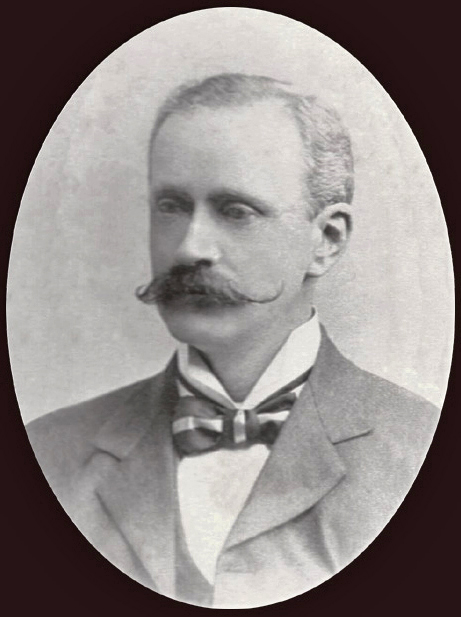
6. Eli
Thomas Elkins Green
was born on 24 Jun 1851 in High Street, Towcester,39
died on 21 Apr 1906 in 3 Grange Terrace, Sunderland, Co. Durham 40
aged 54, and was buried in Bishopwearmouth Cemetery, Chester Road,
Sunderland.
The Sunderland Daily Echo and Shipping Gazette
carried this report of Eli's death:
|
DEATH
OF MR ELKINS-GREEN
We
regret to announce
the death of Mr Eli Thomas Elkins-Green, dental surgeon, which took
place at half-past nine on Saturday night at his residence, 3, Grange
Terrace.
Mr Elkins-Green leaves a widow
and two
sons and one daughter.Mr Elkins-Green was taken ill on Easter Monday [April 16th]. The symptoms did not appear dangerous, and the family were quite unprepared for the end. An active and vigorous out-door life during his earlier years and a studious life during more recent years had, however, left Mr Elkins-Green's heart affected. The deceased gentleman was in his fifty-fifth year and came to Sunderland 16 years ago. He was the son of Mr Joseph Coghlan Green, surgeon, of Northampton, and a direct descendant of an old English family, the Greens of Green's Norton. He was a well-known member of the Wearside Golf Club. Although a staunch Conservative, he did not take any active part in politics or municipal affairs. When a young man cricket was his favourite pastime, and he was a prominent member of the Northamptonshire Cricket Club.**** He was a man of retiring nature, and was known to his friends as kindly and clever. The funeral will take place at the Bishopwearmouth Cemetery tomorrow. |
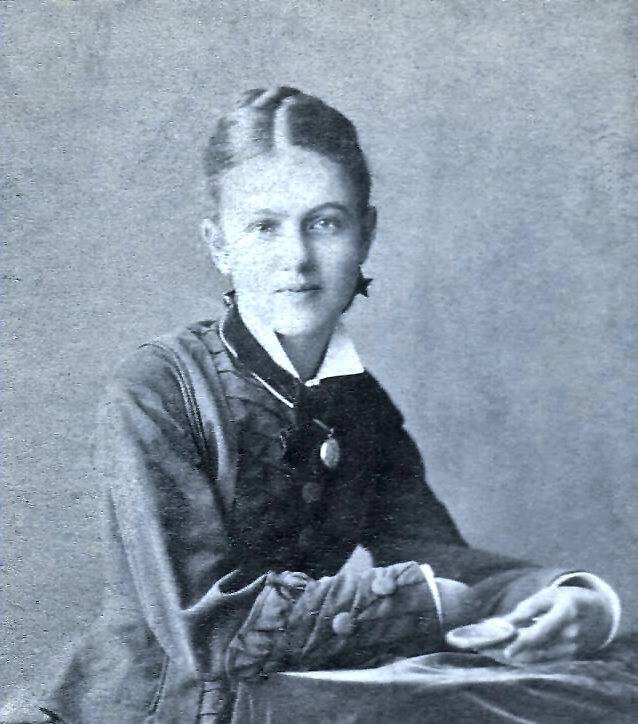
Eli married Alice Maud Rebecca James,63,64 daughter of John James and Rebecca Hunt, on 6 Feb 1877 in Chapel of St Thomas, Ryde, IOW.41 Alice was born on 6 May 1855 in Newchurch, IOW,63,64 was baptised on 3 Jun 1855 in St Peters, Haven Street, IOW,65 died on 25 Feb 1947 in St Mary's Hospital, Portsmouth 66 aged 91, and was buried on 22 Mar 1947 in Bishopwearmouth Cemetery, Chester Road, Sunderland.
Alice
was the youngest of the children born to John and Rebecca. Her son Dick
writes that she had 20 siblings and a newspaper report of her sister
Lucia's death even puts the figure as high as 21. However, it is
difficult to see, given Alice's year of birth and her position as the
youngest child, how her mother could possibly have produced 21 children
during her childbearing years unless there were
several sets of twins that did not survive; an explanation,
incidentally, that Dick offers. A more accurate figure probably comes
from the Isle of Wight parish registers. They record only 14 baptisms
in which John and Rebecca are named as the parents and Alice's brother
William John James confirms that count in his family records.
Alice's
father spent his life working in the building trade — historically, the
James family had connections with building work and its associated
trades. In the early years, he was a bricklayer or a stone mason and
then a contractor, though what he contracted to do has not been
discovered. In later years, he seems to have returned to stone masonry
and was also employed as the sexton at his local church, St Peters,
Haven Street. For some years after Alice's birth, her mother worked as
a market-woman in nearby Ryde selling ducks, hens and chickens, etc.;
in view of her many children, it was probably the first opportunity
since her marriage that she had to work away from home.
Alice
had four brothers. Of these, three worked for the Post Office and rose
through the ranks to be Postmasters at various towns and cities in
England, the youngest being appointed an OBE on his retirement. They
set a trend that led to several of their children, nephews and nieces
working for the Post Office in one capacity or another. Alice's other
brother, her eldest, became the black sheep of the family on account of
his and his wife's frequent appearances before the Ryde magistrates. Of
the girls in the family, Alice was fortunate to marry someone in a
profession; the others did not do so well.
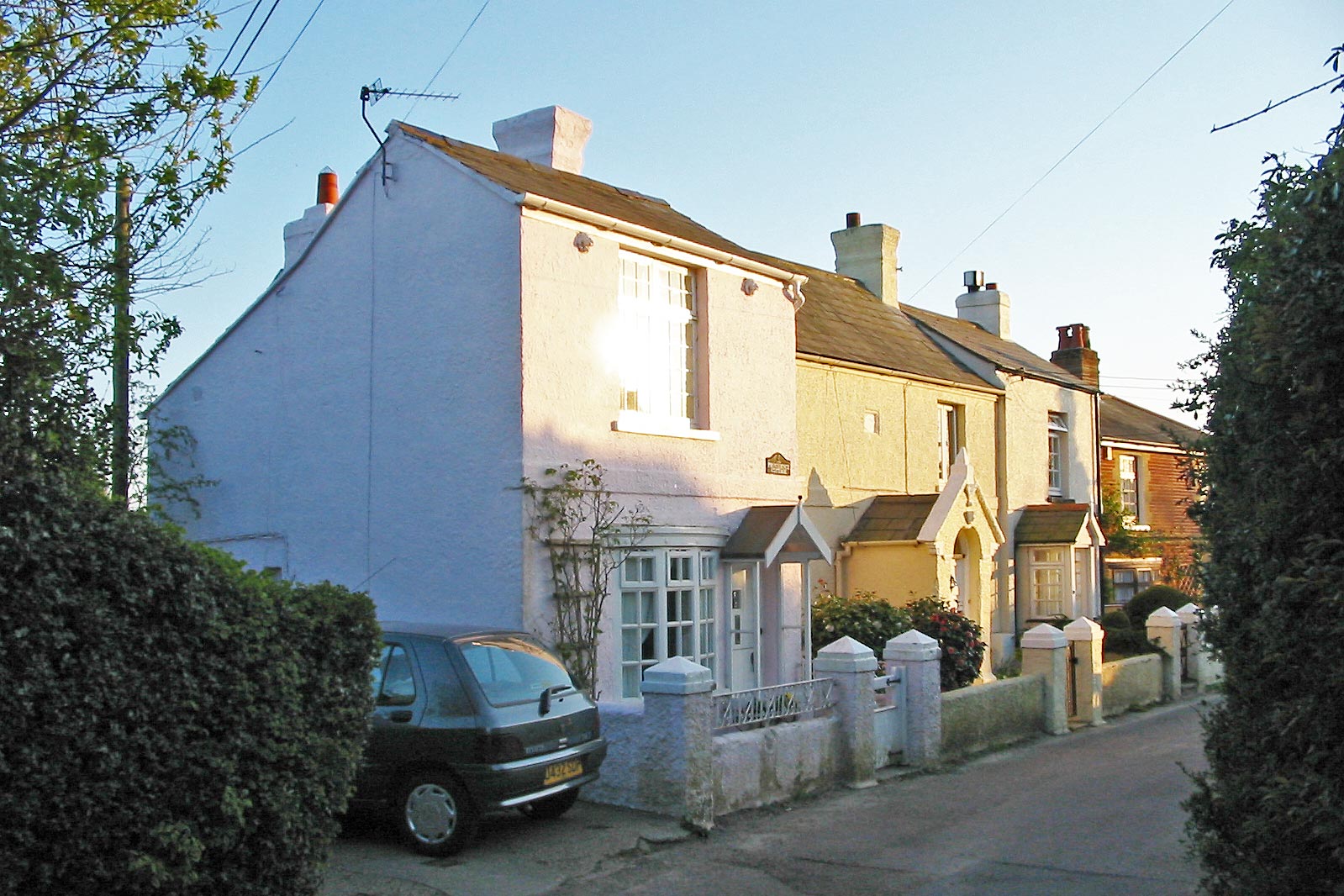 Alice grew up in
Haven Street (later Havenstreet) where her family then lived in one of
the three Providence Cottages near St. Peters Church. The Providence
Cottages were terrace cottages, one of which was said to have been
built by Alice's great grandfather, David James. As can be seen from
the photograph, they are fairly modest in size, indeed, the 1901 census
describes them as having only 4 rooms each, which is how they were when
the writer visited them in April 2002 but by then two of the cottages
had been joined together.
Alice grew up in
Haven Street (later Havenstreet) where her family then lived in one of
the three Providence Cottages near St. Peters Church. The Providence
Cottages were terrace cottages, one of which was said to have been
built by Alice's great grandfather, David James. As can be seen from
the photograph, they are fairly modest in size, indeed, the 1901 census
describes them as having only 4 rooms each, which is how they were when
the writer visited them in April 2002 but by then two of the cottages
had been joined together.
Nothing has been discovered about
Alice's education or whether or not she had any employment prior to
marrying Eli, certainly she did not admit to any at the time of her
wedding though virtually all the James girls went in to domestic
service on leaving school and also she was living away from home in
Ryde before she got married.
Many years later, Dick wrote this of his mother not long after his
father's death:
"My
mother, Alice, has a dauntless spirit. I have the greatest admiration
for her. She was a splendid wife and mother and had a feeling of
sympathy and understanding with her neighbours so that they called upon
her strength and kindness when they needed help. No tradesmen's errand
boy ever left her door hungry or poorly clad. She was a terrific worker
and always worked with her maids; she left nothing undone. I do not
remember a single instance when Alice was afraid or showed nervousness.
She was passionately warm hearted and most gentle but no terror could
have turned her from her course. She loved my father with all the
strength that belonged to her great spirit and she to he was the only
woman in his life. He told me so.
As children we were very
happy in our home. It has been remarked upon to me by old friends that
it was noticeably so but naturally we accepted the goodness and sweet
kindness of our parents as being quite usual."
In later
years, relations between mother and son seem to have cooled perhaps on
account of Alice's closeness to Dick's sister Norah who had become
persona non grata as far as he was concerned after she walked out of
her marriage with Alfred Tully and been divorced by him. Certainly, the
writer does not remember his great-grandmother being spoken of very
much.
When Alice died in 1947, she left 3 Grange Terrace to
Norah, which meant that Dick became Norah's tenant until he retired in
1955 and gave up the house. This, and the fact that Norah was the sole
beneficiary of his mother's Will, caused Dick much annoyance. 63,67,68,69,70,71,72,73
Children from this marriage were:
+ 10 M
i. William
Elkins-Green was born on 29 Aug 1877 in 15 Camden
Street, Forton, Gosport, Hampshire,74
was baptised on 8 Sep 1878 in St Peters, Haven Street, IOW,75
died on 8 Mar 1909 in Alexandria, Egypt 76
aged 31, and was buried in British Cemetery, Alexandria, Egypt.77
+ 11 M
ii. Richard
James Green was born on 14 Jun 1880 in 17 Princess
Street, Northampton,85
was baptised on 15 Aug 1880 in St Peters, Haven Street, IOW,86
and died on 13 Feb 1978 in Tirril Lodge, Tirril, Nr Penrith 87
aged 97.
+ 12 F
iii. Alice
Norah Green was born on 26 Jul 1883 in Northampton,
Northamptonshire,90
was baptised on 17 Aug 1884 in St Peters, Haven Street, IOW,91
and died in Apr 1979 in Queen Mary's Hospital, Sidcup 92
aged 95.
 Fourth
Generation
Fourth
Generation 
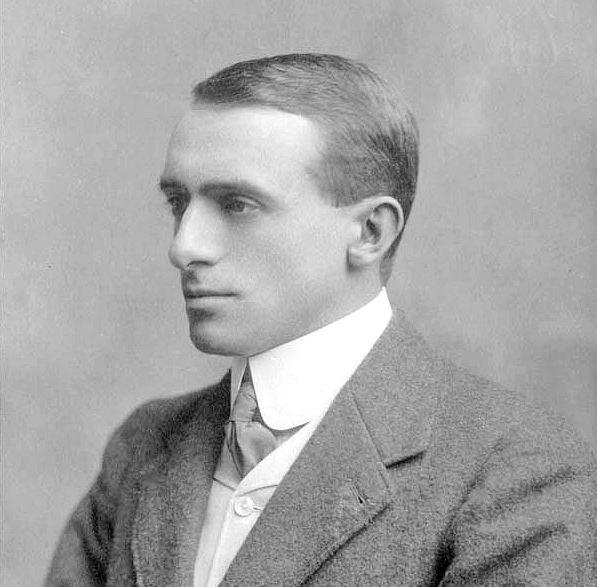
10. William
Elkins-Green
was born on 29 Aug 1877 in 15 Camden Street, Forton, Gosport, Hampshire,74
was baptised on 8 Sep 1878 in St Peters, Haven Street, IOW,75
died on 8 Mar 1909 in Alexandria, Egypt 76
aged 31, and was buried in British Cemetery, Alexandria, Egypt.77
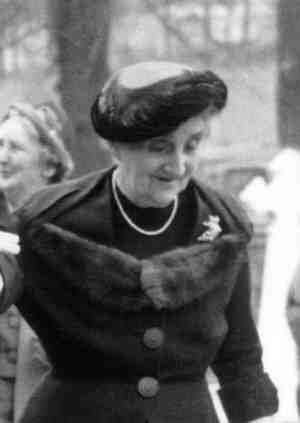
William married Constance May Haynes, daughter of George Haynes and Emma Meacham, on 15 Nov 1904 in Christ Church, Lichfield 78,79,80,81,82,83.,84 Connie was born on 25 Feb 1881 in Hednesford, Staffordshire 97,98 and died on 20 Mar 1964 in Codsall, Staffordshire 99,100 aged 83.
Connie
was the younger of two surviving daughters born to George and
Emma, her only brother Samuel having died when he was 16 years old.
Connie's
grandfather, Samuel Haynes, was a gas engineer who, in 1843, was
appointed manager of Lichfield Gas Works; later, he went on to be a
director of the gas company. He always referred himself as a gas
engineer but he must have had considerable entrepreneurial flair as
well because in the late 1860s he was a founding shareholder and one of
the original directors of the Lichfield Brewery. It is said that he had
one of the largest shareholdings, if not the largest, in that business
and as a consequence took a great interest in its success. (Connie's
father was employed by that Brewery for many years as one of its
travellers and, her uncle by marriage, Thomas Cox, also worked for it).
In later years, Samuel became deeply involved in Lichfield's civic
affairs and was, amongst other things, the City's Mayor on three
occasions.
When Samuel died in 1904, Connie's father, George,
who had by then retired from travelling for the Brewery, took over some
of his father's appointments. He ended up being Chairman of the
Lichfield Gas Company, a director of the Brewery as well as one of two
other local companies. Like his father, as the years went on, George
became a city councillor and was also elected Mayor on three occasions.
He was still an alderman and a senior member of the Lichfield City
Council at the time of his death in 1926.
As a result of
Connie's grandfather and father's commercial and civic work, the Haynes
family was widely known and respected in Lichfield as well as being
rather prosperous.
Connie's granddaughter, Bonny Ward (née
Elkins-Green), tells stories of her grandmother's extravagant lifestyle
in later years, which is quite possibly why little remained of her
share of the Haynes family fortune when she died in 1964.
It has not been discovered how long William spent in Litchfield learning dentistry, certainly he was there at the time of the 1901 Census and it is likely by that time he had met Connie. When Connie's elder sister Lizzie got married in January 1902, William and his parents were among the wedding guests, which suggests that William and Connie were either engaged or had "an understanding" at that stage. In the event, they waited nearly 3 years before being married, which may have had something to do with William's training and also to delays caused by bereavements in the Haynes family.
When William and Connie did eventually marry, the occasion was a good deal more muted than the wedding given for Connie's sister on account, as the newspaper report below suggests, of the death of Samuel Haynes in June followed by the sudden death of Connie's aunt, Sarah Cox (née Haynes) in October.
|
MARRIAGE
OF MISS CONSTANCE MAY HAYNES
On
Tuesday at Christ Church, Lichfield, by the Rev. C. T. Holmes, Mr
William Elkins-Green son of Mr Edward (sic) Elkins-Green, of
Sunderland, was united in the bonds of Holy Matrimony to Miss Constance
May, youngest daughter of Mr George Haynes, of Cranmere, Lichfield. The
bride, who was given away by her father, was attired in a charming gown
of white chiffon and lace, and carried a choice bouquet of white
flowers. The bridesmaids were Miss Reeves (cousin of the bride) and
Miss Brookes (of London). Their costumes consisted of cream silk voile,
trimmed pink chiffon and lace, and white picture hats. They also
carried bouquets of pink carnations which, with the gold pendants they
wore, were the gifts of the bridegroom. The best man was Mr R. Compton
Holt, of Bradford. After the ceremony a wedding breakfast was held at
Cranmere and later in the afternoon, the happy pair left for Scotland,
where the honeymoon will be spent. The bride's travelling costume
consisted of pale blue cloth and hat to match and she carried a muff of
chinchilla and lace. The wedding presents were numerous and costly.
Owing to recent bereavements in the bride's family, the wedding was
very quietly celebrated.
|
Children from this marriage were:
+ 13 M
i. Denis
Haynes Elkins-Green was born on 24 Feb 1906 in 35
Azalea Terrace South, Sunderland 105,106
and died on 29 Dec 1978 in Birmingham, Warwickshire 107,108
aged 72.
+ 14 M
ii. Terence
Haynes Elkins-Green was born on 19 Nov 1907 in 17
Rowlandson Terrace, Sunderland, Co. Durham,111,112
was baptised in Christ Church, Bishopwearmouth, Co. Durham, and died in
Feb 1988 in South Staffordshire 113
aged 80.
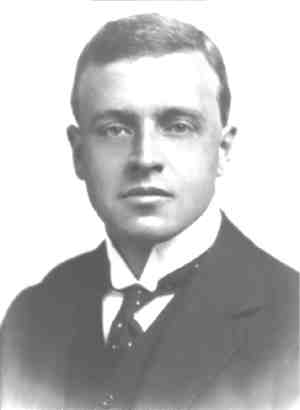
11. Richard
James Green
was born on 14 Jun 1880 in 17 Princess Street, Northampton,85
was baptised on 15 Aug 1880 in St Peters, Haven Street, IOW,86
and died on 13 Feb 1978 in Tirril Lodge, Tirril, Nr Penrith 87
aged 97.
Dick's
early childhood was spent in Northampton, Sheffield and
Barbourne, which was then a small village on the outskirts of
Worcester. His education may have started in Sheffield but we do know
that he went to a local school in Barbourne or Worcester during the
family's time there.
When his father moved the family to
Sunderland in 1889, Dick went to Lovat's boys' preparatory school at
Scarborough and then, from 1893, he was sent to Argyle House School in
Sunderland, an independent school that is still functioning in 2014. He
left Argyle House in 1896 having passed his preliminary medical
examinations. After that, he studied science at King's College,
Newcastle, for three years while working as an apprentice in his
father's dental practice and then in 1899, he went to Guy's Hospital in
London to train as a dental surgeon. Before going to Guy's he and his
first cousin, Newton James, who was also apprenticed to his father, had
to pass the preliminary science exam in the first part of English
Conjoint Diploma of the London Royal Colleges of Medicine, which was
then the basic medical qualification. They both succeeded in doing so
in the summer of 1899.
Whilst at Guy's, Dick played water polo
for the hospital team that reached the semi-finals in the
Inter-Hospital Cup matches one year; he was awarded a half blue for
this in 1901. Also, whilst at Guy's he was appointed Student
Demonstrator and an Assistant Dental House Surgeon. Eventually, in
1901, he qualified as a Licentiate of Dental Surgery, Royal College of
Surgeons; he was the youngest of the entry from Guy's that year.
In
1901, the second Boer War was still being waged and Dick took an
appointment as a Civil Dental Surgeon to the British South African
Field Forces with whom he served in Cape Colony, Orange River Colony
and Griqualand West spending most of his time (11 months) attached to
No. 11 General Field Hospital at Kimberly. He came home when
hostilities ceased in the summer of 1902 and was awarded The Queen's
South Africa Medal. The QSA was a medal that was awarded to military
personnel who served in the Boer War between 11 October 1899 and 31 May
1902 and also to civilians employed in an official capacity, as he was,
and to war correspondents; it carried many different clasps
representing the recipient's areas of service and battle engagements.
Dick's medal carried these clasps "Cape Colony", "Orange Free State",
"South Africa 1901" and "South Africa 1902".
Back in Sunderland
once more, Dick worked in his father's dental practice, at 3 Grange
Terrace, and practiced with him until the latter's death in 1906 and
then continued with the practice on his own for nearly fifty years.
In
July 1903, he joined the Palatine Lodge of the Freemasons in Sunderland
hoping, perhaps, to develop his contacts in the town but being by
nature a rather "unclubbable" person he did not enjoy the meetings and
dinners and soon lapsed.
In 1904, he took a commission as 2nd
Lieutenant in the 3rd (Sunderland) Volunteer Battalion, The Durham
Light Infantry; he was gazetted on 5 July 1904. He did not remain very
long with the Battalion as he resigned his commission in September 1905.
During
WW I, he was attached as Hon. Dental Surgeon to the Royal Infirmary,
Ashburne and Hamerton VAD Hospitals in Sunderland. There was no
opportunity to serve with the field forces in a dental capacity as
there were no Dental Corps in any of the Services at that time and
dentistry was deemed an exempt occupation when conscription was
introduced in 1916.
In 1917, Dick had a paper published in the
Lancet. It drew on his experience in South Africa and concerned the
care and reconstruction of mouths damaged by bullets or shrapnel; it
was, no doubt, very apposite at the time.
After WW I, Dick
continued to develop a fashionable dental practice in Sunderland that
was used by many of the City's leading families; the writer's mother
went to No. 3 for her dental treatment as a child as did many of her
friends. Dick worked single-handed as was often the case in those days,
employing a dental mechanic on the premises to make bridges, crowns,
dentures, and so forth when needed; it was essentially a private
practice (i.e. based on a fee for service) though Dick did do work
under the National Health Service when it came into effect in 1948.
The
writer remembers the spacious but rather old-fashioned surgery, which
his grandfather used and which doubled as his office. Though it did not
occur to him at the time, the dental equipment had probably changed
little since the Edwardian era when No. 3 was first set up as a dental
surgery and it came as quite a shock to discover that dentistry had
moved on so much when, in 1956 as a national serviceman, he had his
first treatment in someone else's surgery.
The success of
Dick's practice was not, it must be said, solely on account of his
ability as a dental surgeon; his good looks, charm and gentle "chair
side" manner earned him considerable respect and a loyal following in
Sunderland, particularly amongst his female patients who seemed to have
had a tendency to take him into their confidence about all sorts of
private matters.
In 1955, when Dick retired from practice at the
age of 75, he bought a property on the edge of the Lake District at
Tirril, not far from Lake Ullswater, called Tirril Lodge. Dick lived
out the remainder of his life, nearly another twenty-two years,there
and died, after a short respiratory illness, in February 1978, at the
age of 97. He would have been disappointed not to have made a greater
age as he often expressed the wish that he would live longer than his
several long-lived maternal aunts (one lived to the age of 99). He did
not live to know it but he survived two years longer than his sister
Norah who died in April the following year; that would have pleased him
enormously as they did not get on and she was never mentioned. 9,115,116,117,118,119,120
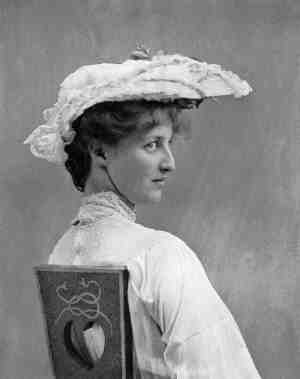
Dick married Madeline Vidal, daughter of Captain John Henry Vidal, R.N. and Julia Ursula Bancroft Espeut, on 26 Apr 1905 in Christ Church, Turnham Green, Middlesex 88.,89 Madge was born on 18 Dec 1880 in 2 Roker Terrace, Sunderland, Co. Durham,121just was baptised on 16 Jan 1881, and died on 16 Jul 1953 in 3 Grange Terrace, Sunderland, Co. Durham 122,123 aged 72.
Madge's
father was
a Royal Naval officer who, at the time of her birth, was commanding HMS
Durham,
a Royal Navy training ship stationed at Sunderland. Later, he commanded
the Sunderland Coast Guard before retiring in November 1886 with the
rank of Captain. Madge's early schooling took place in Sunderland at
Claremont House School. Later, in January 1896, she went as a boarder
to Queen Anne's School, Caversham, where she remained until the end of
the spring term of 1899. There is a suggestion that Madge may have gone
to some form of finishing school after leaving Queen Anne's but nothing
has been found to confirm this.
Not much information about
Madge's time at Queen Anne's has survived but it appears that she was a
member of the School Cricket XI when it was started in 1898 (there is a
comment that she showed good form as a batsman) and also played hockey.
When she came to leave the Headmistress is reported to have said
"...... the loss of Hilda Mason & Madeline Vidal who are
leaving
this term, will be especially felt by those concerned with gymnastic
work; their ready and able assistance at all the classes has been of
the greatest value."; a comment that highlighted Madge's considerable
athletic ability.
In the period 1903 to 1915 (with some breaks),
there are numerous press reports of Madge playing hockey for a
Sunderland club known as Ashbrooke and for Durham Ladies in
inter-county matches. There are also reports of her playing in tennis
matches but, rather surprisingly, none of her playing lacrosse though a
surviving photograph, dated 1907, shows her sprinting down the wing in
an unidentified match. Queen Anne's had a reputation for being good at
lacrosse and Madge is said to have shone at the game but perhaps there
were few opportunities then for ladies to play it except at school.
Very
shortly before her marriage to Dick, she and her parents moved from
Sunderland to Gunnersbury in Middlesex but she was back in Sunderland
again very soon, setting up house with Dick at Roker not far from where
she had spent the past 24 years. Despite having been brought up in
Sunderland, it seems she was always keen to escape from it. Indeed,
while her parents lived in the London area, she regularly slipped away
to stay with them (she was a much doted upon daughter) leaving Dick
behind in Sunderland.
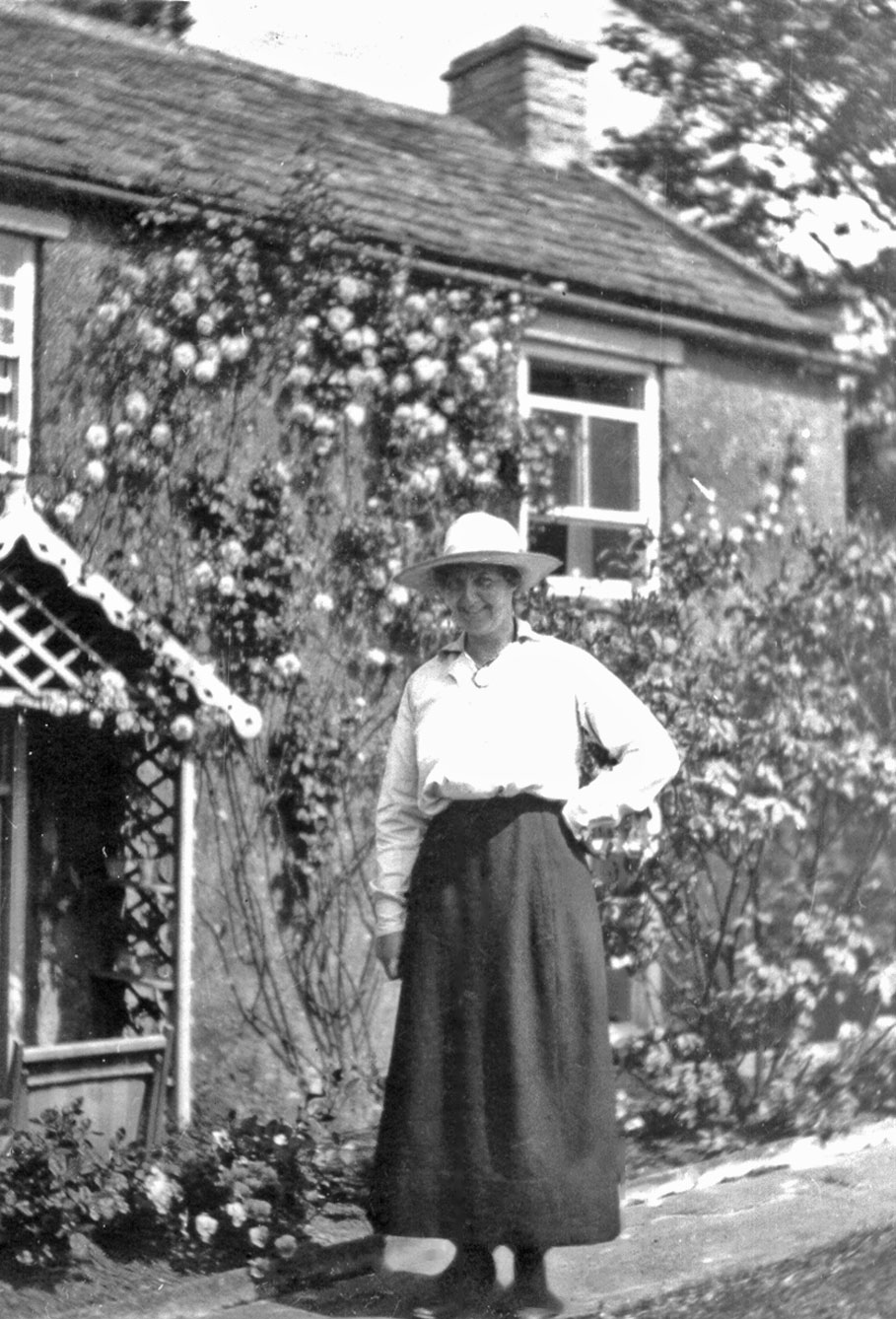 Her real escape
came in 1915 when she and
Dick found a country house at Carperby in Wensleydale, which became her
base and great love for the next fourteen years or so. "The Firs", as
the house at Carperby was called, provided an attractive place in which
to bring up children and an enjoyable weekend retreat for Dick and the
years that Madge spent at Carperby were perhaps the happiest for her in
what seems to have been not a very happy marriage. She loved the
village, her house and its garden and was well respected in the
community, so it must have been a great sadness to her when the lease
was eventually let go after Dick acquired Winshields farm in June 1929.
Her real escape
came in 1915 when she and
Dick found a country house at Carperby in Wensleydale, which became her
base and great love for the next fourteen years or so. "The Firs", as
the house at Carperby was called, provided an attractive place in which
to bring up children and an enjoyable weekend retreat for Dick and the
years that Madge spent at Carperby were perhaps the happiest for her in
what seems to have been not a very happy marriage. She loved the
village, her house and its garden and was well respected in the
community, so it must have been a great sadness to her when the lease
was eventually let go after Dick acquired Winshields farm in June 1929.
When
Madge's two sons started farming Winshields in the summer of 1930, she
went there to run the house for them and stayed until her eldest son,
Dick, junior, married in June 1932 and his wife Phyllis took over that
role. For a while, it was back to a familiar situation: Madge and her
sons living at Winshields and Dick coming every weekend from Sunderland
to be with them and, no doubt, to check up on how the farm was being
run.
After her stint at Winshields, Madge went back to living
in Sunderland and took to playing long sessions of auction bridge with
her friends and to making regular visits to the theatre and cinema to
escape her dull life at home with its the constant flow of patients.
Quiet descended at the weekends when Dick often went to see how things
were at Winshields leaving her with the weekend to herself — once
Phyllis became mistress of Winshields, Madge tactfully restricted her
visits to Christmas and Easter.
Sadly, towards the end of her
life, Madge suffered from angina (something not so readily treatable in
the late 1940s/early 50s) and, worse still, was diagnosed as having
ovarian cancer that, despite heroic surgery in 1951, eventually led to
her death. 125,126,127,128,129
A local newspaper
gave this report of Dick's and Madge's wedding:-
|
CHISWICK
A Pretty
Wedding at Turnham Green
The bride looked charming in a beautiful dress of ivory chiffon glace silk, trimmed with old family Limerick lace, kindly lent by her aunt, Mrs Hildebrand Oakes. Her veil was of old Brussels lace, lent by Mrs Espeut, her aunt, and she carried a lovely bouquet of white roses, orange blossoms, gardenias, and stephanotis. The only jewels worn by the bride were a string of family pearls, pendant, and brooch, the gift of her mother. She was given away by her uncle, Mr Hildebrand Oakes, and the bridegroom was supported by Mr Jack Cameron. The only bridesmaid, Miss Dora Squance, was attired in a dainty dress of pale green Aeolienne silk, the bodice having a yoke and deep cuffs, soft green lace, with a deep waist band of moire ribbon to match the dress. Her skirt was trimmed with scalloped frills and ruches, and the hat was of pale green ruffled tulle, trimmed with white lilac and ribbon to match. She carried a bouquet of Allan Richardson roses, which with a handsome pearl and peridot brooch were the gifts of the bridegroom. Mrs Vidal wore a costume of dark blue Æolienne silk trimmed with guipure. The presents, which were very handsome, numbered over 160 and included the following:- from the bride to the bridegroom, a portmanteau and leather hat box; from the bridegroom to the bride a complete hammered silver dressing table set. After the ceremony a reception was held at Oakholm, Grosvenor-road, Gunnersbury, which was largely attended by relatives and old friends. During the afternoon the happy pair left for Dover, en route for Paris and Switzerland. The bride's travelling dress was of electric blue cloth, trimmed with cream lace and hand painted green velvet, with hat of Tuscan straw, trimmed with pink roses and blue ribbons to match the dress. She also wore sable furs. 124 |
+ 15 M
i. Richard
Vidal Green was born on 21 Feb 1906 in 9 Roker Park
Road, Sunderland, Co. Durham 130
and died on 1 Jan 1988 in Smithy Cottage, Tirril, Penrith 131,132
aged 81.
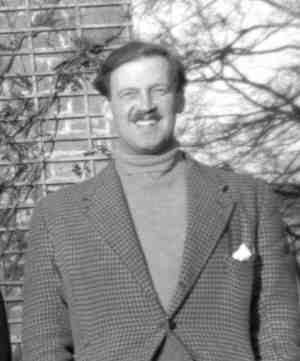
16 M ii. Hildebrand Vidal Green
135
was born on 5 Oct 1908 in 9 Roker Park Road, Sunderland, Co. Durham 136
and died on 5 Aug 1988 in Fell Cottage, East Haydon, Haydon Bridge,
Northumberland 137,138
aged 79.
Hildy
followed his brother Dick to the boys' preparatory school,
Temple Grove, in the January of 1915. At Temple Grove, he does not seem
to have shown much academic ability but did make his mark on the sports
field both as an athlete and as a member of the school's 1st cricket,
soccer and rugger XIs. Then, in September 1922, he joined his elder
brother in Frank Stone's house at Radley College. Here, as at Temple
Grove, he had considerable success as an athlete and was in various
school teams, particularly the cricket XI (he got his 1st XI Cricket
Cap in 1925 at the age of 16) but left with minimal academic
qualifications at the end of the summer term in 1926.
It appears
that Hildy thought he might go into the Army and, having failed to get
the necessary school certificates while at Radley, he went to a crammer
for a term or two to retake them but did not do enough work and failed
to get the necessary results.
How Hildy occupied the next two
years or so is now a bit of a mystery. He may have worked as a farm
pupil like his brother or simply hung around at home in Carperby or
elsewhere. If his Vidal cousin Peggy is to be believed, a lot of his
time was spent in London. However, after his father acquired Winshields
farm in Northumberland in September 1929, he went to work with the
existing tenant there, a Mr Thompson, in November of that year, which
suggests that he was not committed to anything else. He and his brother
Dick then worked Winshields jointly for a couple of years or so after
Mr Thompson was bought out in May 1930; Hildy leaving after Dick
married in 1932 because Dick's wife Phyllis found the domestic
arrangements with him living there intolerable.
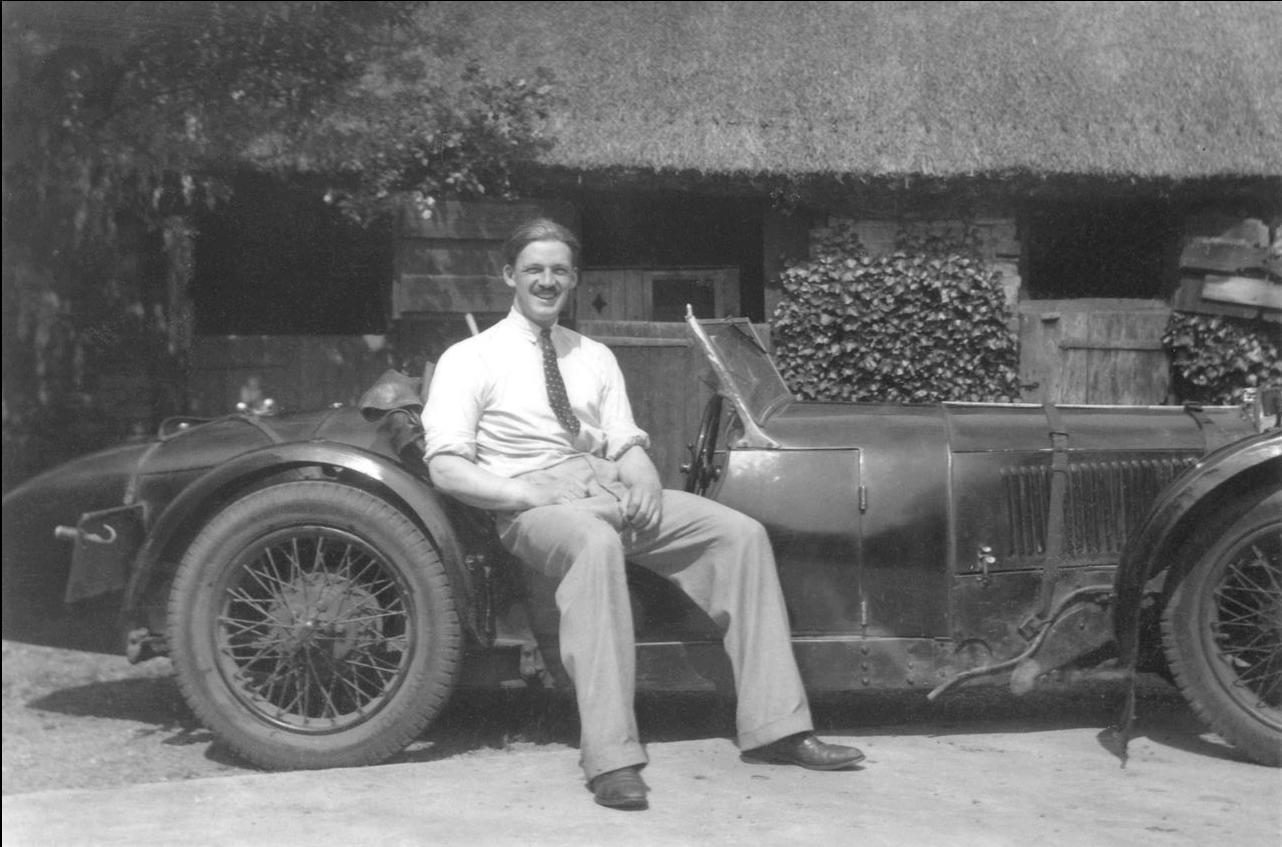 After that,
Hildy appears to have done some work in land or estate agency until his
father bought a mushroom farm in 1937 at Elstead in Surrey where Hildy
was put in charge. Few details about this enterprise have survived
because little was said about it on account of it having ended in
disaster but do we know that Hildy was there at the time Elstead's
electoral register was compiled in 1937. The story goes that the wooden
buildings in which the mushrooms were grown were destroyed by fire one
day (no date has been established) and were not insured, as Hildy had
spent the insurance money, which he had been sent by his father, on
other things. Fortunately, the cottage where Hildy lived was separate
from the mushroom farm.
After that,
Hildy appears to have done some work in land or estate agency until his
father bought a mushroom farm in 1937 at Elstead in Surrey where Hildy
was put in charge. Few details about this enterprise have survived
because little was said about it on account of it having ended in
disaster but do we know that Hildy was there at the time Elstead's
electoral register was compiled in 1937. The story goes that the wooden
buildings in which the mushrooms were grown were destroyed by fire one
day (no date has been established) and were not insured, as Hildy had
spent the insurance money, which he had been sent by his father, on
other things. Fortunately, the cottage where Hildy lived was separate
from the mushroom farm.
When WW II broke out in September
1939, Hildy volunteered to drive an ambulance for the London County
Council, as he was too old to join up, being nearly 31 by then.
In
April 1940, over-age men were allowed to enlist in the Royal Engineers
and the Royal Army Service Corps (RASC) and Hildy immediately enlisted
in the RASC. In November 1940, he was sent to an Officer Cadet Training
Unit from which he is said to have passed out second in March 1941.
According to his father's account, Hildy and the man who passed out
first were sent, as an honour, to Gibraltar, which was presumably seen
to be an attractive posting at the time.
Hildy remained on an
emergency commission as a substantive 2nd Lieutenant from 1941 to 1946
when he was granted the honorary rank of Captain on relinquishing his
emergency commission. He had, in fact, been made a temporary Captain in
March 1942. During the rest of War, he served in North Africa (1943)
and with the Allies during the advance through France in 1944. In 1945,
he was on Port Detachment duties in Antwerp and then Hamburg before
returning to England for demobilisation.
Back in England, he
re-enlisted in the RASC on a short service commission as a Regular Army
officer and, in July 1946, was given the rank of Lieutenant and later
posted to Egypt. In Egypt, he served in Alexandria, Amiriya, Cairo,
Tell-El-Kebir (near Ismailia), Suez and in Ismailia itself. Later,
having transferred to Palestine, he was in Jerusalem, Gaza and Rafah in
the bloody run-up to the end of the British mandate there. In November
1947, he was promoted to Captain. He eventually returned to England in
August 1949 and, the following month, he was put in charge of one of
the RASC's Command Supply Depots where he seems to have remained until
he resigned his commission in March 1952.
After leaving the
Army, Hildy based himself at 3 Grange Terrace in Sunderland until his
father moved from the house in September 1955. He had always had a
taste for fast cars as the photograph shows and the writer remembers
being regaled as a young boy with stories of the cars Hildy had owned,
the most notable of which being one of Mercedes-Benz's 1930s,
supercharged roadsters; cars, incidentally, more notable for their
acceleration than their ability to stop! For a while in the early
1950s, he owned an Allard sports car and the writer remembers him
proudly claiming it achieved c.125 mph on, for those days, a rare
stretch of dual carriageway north of Newcastle. At the time, that was
considered an impressive speed.
Hildy's upbringing in North
Yorkshire had given him a love of the countryside and its wildlife and,
on leaving Sunderland, he opted for a rural existence in
Northumberland. For most of the next 30 odd years, he lived a simple
and, seemingly, rather lonely life in a small, remote cottage up on the
moors near New Alston, Haydon Bridge, with only his dogs for company.
Sadly, worries about his health and, perhaps what the future held,
caused him to take his own life in August 1988. 139,140,141,142,143,144
Hildy married Evelyn Pamela Hine, daughter of Evelyn Vernon Hine and Esther Rawson Harris, on 22 Jan 1938 in Caxton Hall, London 145.,146 The marriage ended in divorce. Pamela was born on 28 Sep 1916 in Newnham Hall, Baldock.9,147,148
Not
very much is known about Pamela. Her father was a scion of a
prominent Hertfordshire family who had trained as a civil engineer.
However, he spent most of his working life in the Darlington and
Middlesbrough area and died there at the relatively young age of 53 in
1936. Pamela's mother was the only daughter of a King's Counsel who was
at one time the Metropolitan Crown Prosecutor for New South Wales.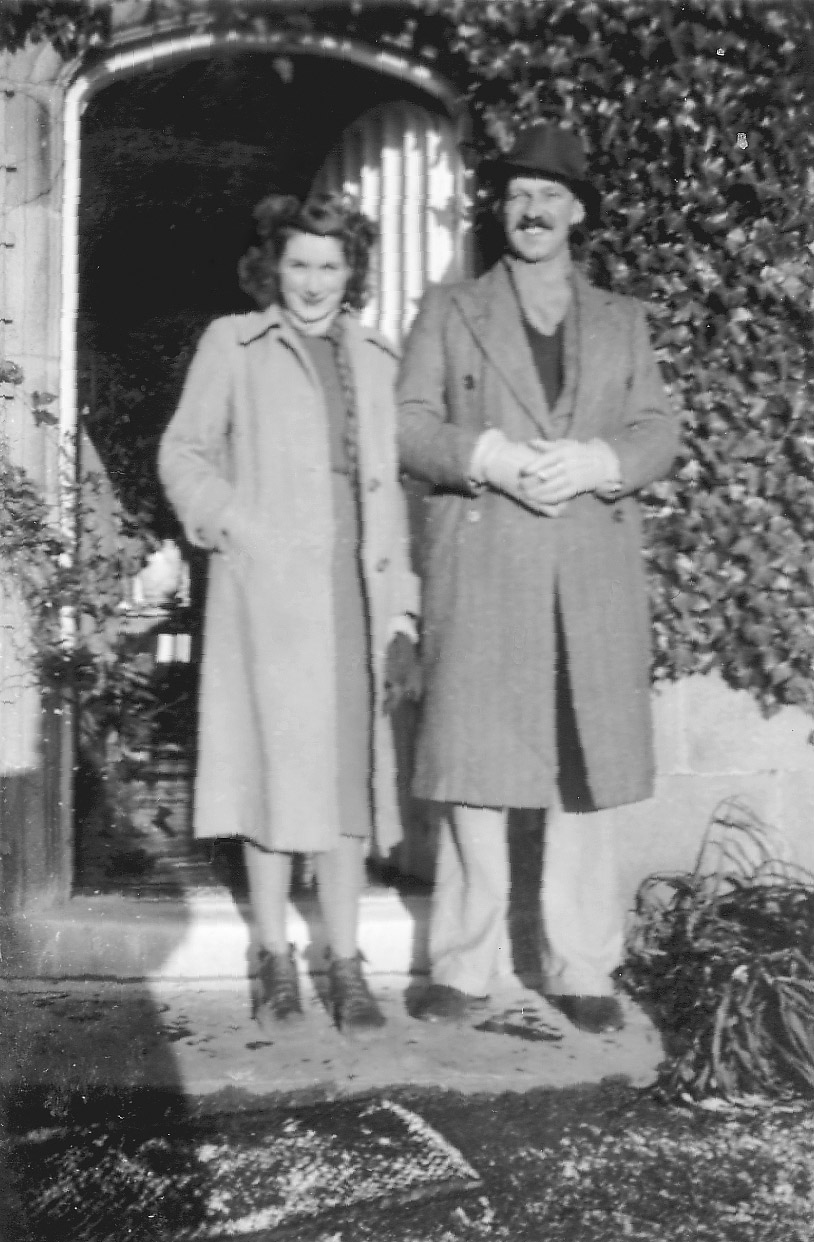
By
all accounts Pamela and Hildy's marriage fell apart very quickly,
amongst other things
Pamela had been much misled about Hildy's
financial circumstances and no doubt the
commencement of WW II and
Hildy's enlistment in May 1940 provided them with an opportunity to go
their separate ways.
Pamela remarried in 1943 and bore her husband, William Ellis, three
children.
Hildy
never married again but he liked to project the image of someone who
had many romantic liaisons. The writer remembers his mother being most
amused at finding a large double bed installed in his bedroom at the
remote cottage where he lived in Northumberland. 124
12. Alice
Norah Green
was born on 26 Jul 1883 in Northampton, Northamptonshire,90
was baptised on 17 Aug 1884 in St Peters, Haven Street, IOW,91
and died in Apr 1979 in Queen Mary's Hospital, Sidcup 92
aged 95. Another name for Norah was Alice Norah Elkins-Green.
For
reasons that
have been explained earlier Norah's brother Dick
hardly mentions her in his account of the Green family. As a result,
very little about her life is known to the writer.
It seems that
she was educated, at least in her later schooling, at an independent
girls' boarding school known as Bootham in York, which is still
functioning today (2014), though now it takes both boys and girls.
Apart
from this, no information has been discovered about her life except
that at some stage in her later years, she reverted to calling herself
Mrs Tully and when she died her death was registered under that name,
though, as far as can be discovered, she never formalised the change
from Stallybrass.
Norah married Alfred Tully, son of John Tully and Margaret Thompson, on 14 Feb 1905 in Christ Church, Bishopwearmouth, Co. Durham 93.,94 The marriage ended in divorce on 14 Oct 1910. Alfred was born in 1878 in Sunderland, Co. Durham 149 and died on 28 Dec 1968 in Sunderland, Co. Durham 150,151 aged 90.
Alfred
was the
youngest but one of a family of twelve children born to
John and Margaret of which there were seven daughters. His father was a
prosperous Sunderland ship owner and his three older brothers carried
the family shipping business, Messrs John Tully and Sons, when he died
in 1902 whilst Alfred became an electrical engineer.
Nothing
further has been discovered about Alfred except that he seems to have
married again in 1931 but he and his wife Sarah (née Denton) did not
have any children.
Norah
and Alfred's
marriage did not last very long as it appears that
she became infatuated with a young man called Leslie Stallybrass and
eventually left Alfred to become his housekeeper (and later his wife)
taking her two sons with her. The newspaper report below gives some of
the circumstances surrounding her and Alfred's separation and
subsequent divorce:
|
LOCAL DIVORCE CASE.
A DECREE NISI GRANTED. In
the Divorce Court yesterday a decree nisi with costs, was granted to Mr
Alfred Tully, an electrical engineer, Ericville, East Boldon, who
alleged misconduct by his wife with Leslie Stallykass [Stallybrass],
whose position was not stated. The parties, it was said, were married
in 1905 at Christ Church, Sunderland, and there were two children. They
lived at Deneholme, Roker Park, Sunderland, and in 1908 made the
acquaintance of the co-respondent, who became very friendly with them.
In June 1909, the co-respondent took a poultry farm in the South of
England, and the respondent was invited to go there on a visit. She did
so, the co-respondent's mother being in the house. Upon her return, in
consequence of communications which had been made him by the
co-respondent's mother, the petitioner asked his wife whether she was
in love with co-respondent. She denied it, but later told her husband
she wanted to go as housekeeper to Mr Stallykass [Stallybrass]. He
strongly objected but on August 4th she went. Shortly afterwards she
wished return, and eventually the petitioner took her back. The husband
and wife did not, however, get on very well together, and on March 14th
the respondent left her husband again, saying that she had obtained a
situation as housekeeper. She declined to say where. It was ascertained
that she had gone to live with the co-respondent in Newcastle. His
lordship granted the petitioner a decree nisi with costs. 152
|
Norah and Alfred's children were:
17 M i. John Tully was born on
4 Jan 1906 in Sunderland, Co. Durham 153
and died on 22 Mar 1997 in Bexleyheath, Kent 154,155
aged 91.
Nothing has been discovered about Jack except that in the last years of his life he was living with his brother at 22 Bowford Ave, Bexleyheath and it may well be that the two had lived together for many years as William had been a widower since 1975.
18 M ii. William Alexander Tully
was born on 3 Jun 1909 in Cleadon, Co. Durham and died on 17 Apr 2008
in St Austell Community Hospital, Porthpean Road, St Austell, Cornwall
aged 98.
According
to his
stepdaughter, Joan Radcliffe (née Hazell) who looked
after him in his later years, William became an apprentice with the
Hain's Steamship Company in 1923/1924 at the age of 14. It is, also,
known that he received a Merchant Navy medal at the end of WW II and it
must be supposed that he remained in the Merchant Service until he
retired.
William married Charlotte Milne in 1943 in Newcastle upon Tyne, Northumberland.156 Charlotte was born on 5 Apr 1910 157,158 and died on 25 May 1975 in Dartford, Kent 159 aged 65.
Charlotte was the widow of a Merchant Navy Captain who lost his life when his ship was sunk by E-boats off the Norfolk coast in December 1940.
Norah next married Leslie Maine Stallybrass, son of William Swan Stallybrass and Margaret Julia Tucker, in 1911 in Scarborough, North Yorkshire.95 Leslie was born in 1888 in Cardiff, Glamorgan, Wales 160 and died in 1934 in Thornton Heath, Surrey 161 aged 46.
Leslie's
father was a native of Wales where he was an asbestos merchant
in Cardiff around the time of Leslie's birth. Sometime in the late
1890s or 1900, Leslie's father moved his business to Newcastle upon
Tyne and Leslie was sent to a boys' preparatory school called The Mount
in Northallerton. Where he went to school on leaving The Mount has not
been discovered.
It seems, if reports of Norah's divorce
proceedings are correct, that Leslie did a spell of poultry farming
during 1909 and 1910 somewhere in the South and later came back to
Newcastle where Norah and her two Tully children joined him. There is a
report of him being a pig keeper at Gosforth at the time when, in view
of his age, he should have been serving in the Forces during WW I.
Presumably, for some reason or other, he had exemption from being
called-up.
Four years before he died, there is a report in the London
Gazette
of Leslie having been in partnership with a Mr Kelsey in a printing
business in central London. It seems that the partnership had been
dissolved and the business was continuing with Leslie as the sole
proprietor. This was probably the last business venture that Leslie
had, as he died at quite a young age in 1934. It may be that the
effects of the Depression in the early part of the 1930s accounts for
why he left no Will. 162,163,164
 Fifth
Generation
Fifth
Generation 
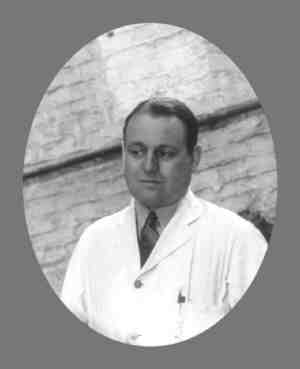
13. Denis
Haynes Elkins-Green
was born on 24 Feb 1906 in 35 Azalea Terrace South, Sunderland 105,106
and died on 29 Dec 1978 in Birmingham, Warwickshire 108,165
aged 72.
Denis
was educated at King Edward VI School in Lichfield and probably
left it at the end of the summer term in 1922 at the age of c. 16½.
After school, Denis got a pupillage in the Lichfield Brewery (his
grandfather George Haynes was probably still a director of the Brewery
in those days) where he learnt enough about brewing to be appointed as
second brewer at a brewery in Wateringbury, near Maidstone, in 1927.
During
his years in Lichfield, Denis made quite a mark on and off the rugger
pitch with the Lichfield Rugby Football Club and there are numerous
reports in the local newspaper during that period about his activities
with the Club.
Denis was to remain in brewing for the rest of
his business career and after a spell in the West Midlands, he spent
the last 20 years or so working for Harman's Uxbridge Brewery until it
closed in 1964. By then, Denis was aged about 58 and he seems to have
retired and gone back to live in Lichfield where he died in 1978.
42,166,167,168,169,170
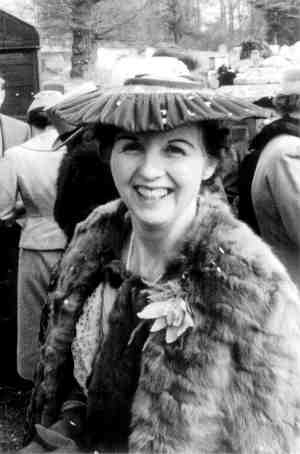
Denis married Rose Barlow Walters,171 daughter of Robert Walters and Sarah Alice Barlow, on 2 Jul 1932 in Coleshill Parish Church, Warwicks 109.,110 Rose was born on 20 Mar 1901 in Old Hall, Kingsbury, Warwickshire 171,172 and died on 9 Nov 1986 in Cambridge 171 aged 85.
Rose's
father came from a Staffordshire farming family based around a
hamlet called Blithbury. He farmed with his father there until sometime
in the 1890s when he moved to Kingsbury in Warwickshire where Rose was
born. Some years later, he took an appointment in Hertfordshire as a
farm bailiff. He died in 1919 whilst farming near Baldock and it seems
that his widow went back to Blithbury where, perhaps, one of Rose's
brothers took on the Manor farm.
Rose spent her last year or so living with her daughter Bonny at
Meldreth in Cambridgeshire.
Denis and Rose's had two children:
+ 19 F
i. Pamela
Rose Elkins-Green was born in 1934 in Dudley,
Staffordshire 173
and died in Nov 2013 aged 79.
+ 20 F
ii. Yvonne
May Elkins-Green
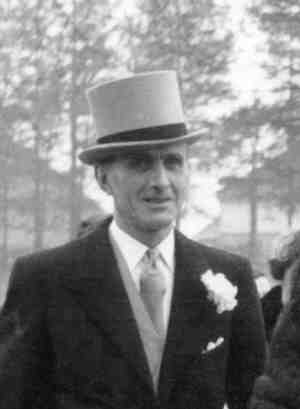
14. Terence
Haynes Elkins-Green
was born on 19 Nov 1907 in 17 Rowlandson Terrace, Sunderland, Co.
Durham,111,112
was baptised in Christ Church, Bishopwearmouth, Co. Durham, and died in
Feb 1988 in South Staffordshire 113
aged 80.
Terence may have gone to school at King Edward VI in Lichfield like his brother but there is nothing to confirm this. In fact, very little published information about his life has been discovered. However, it is said by his uncle, Dick Green, that he trained and practised as a surveyor; this may not be correct as at the time of his marriage to Florence he was a motor van salesman. 42
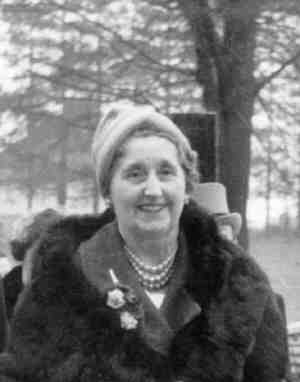
Terence married Florence Mary Jackson,176 daughter of George Henry Jackson and Clara Ball, in 1933 in Walsall, Staffordshire.114 Florence was born on 25 Apr 1906 in Pelsall, Staffordshire 176 and died in 1977 in South Staffordshire 177 aged 71.
Florence's father had been working in the leather trade as a currier for over 30 years by the time she married Terence. Both of her parents' families came from neighbouring villages in Staffordshire and though some of Florence's early childhood was spent in London, her parents must have gone back there at some point because that is where she and Terence were married.
The child from this marriage was:
+ 21 M
i. Anthony
George Haynes Elkins-Green was born in 1936 in
Wolverhampton, Staffordshire.178
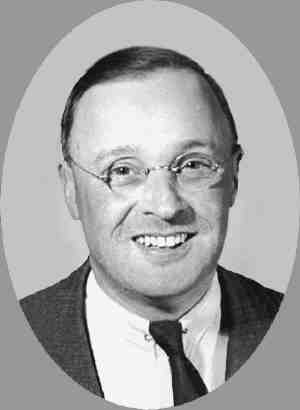
15. Richard
Vidal Green
was born on 21 Feb 1906 in 9 Roker Park Road, Sunderland, Co. Durham 130
and died on 1 Jan 1988 in Smithy Cottage, Tirril, Penrith 131,132
aged 81.
In
January 1913, Dick was sent to a boys' preparatory school known as
Temple Grove, which was situated at that time in Eastbourne. The School
was chosen because it was where his uncle, John Vidal, had gone. Here
he seems to have had an unremarkable time before moving on in the
September of 1919 to Radley College where he entered the boys' boarding
house run by the Rev. Francis Stone, another Vidal relative.
At
Radley, Dick showed some talent for athletics and rowing but little
enthusiasm for academic work. It is not known exactly when he left the
College but it was probably at the end of the summer term in 1923. He
was approaching 17½ years old.
After leaving Radley, Dick went
to Canada as a farm pupil. He never took any credit for this move so it
was probably his parent's idea. Canada was a country of considerable
opportunity at that time particularly for those interested in farming,
as the Canadian Government's homestead scheme gave cheap access to
potential farmland. Conveniently, Dick's mother had a first cousin, Guy
Stone (a Vidal relation), who fruit farmed about 20 acres at
Beamsville, Ontario, and there were other Vidal cousins elsewhere in
Canada, so Dick would have had some family connections to fall back on,
if needed.
Three days before his 18th birthday in 1924, Dick sailed from England
(probably from Liverpool) on the Canadian Pacific's S/S
Montclare
and arrived at St John's, New Brunswick, six days later and made his
way west to the Stone's at Beamsville. He had £10 in his pocket,
according to his immigration papers.
Whether or not Dick
remained in Canada or North America for all of the next 2½ years is
uncertain, as very little information has come down about where he was
and or what he did during that time. Certainly, he spent a period of it
working as a pupil on the Stone's fruit farm but that does not account
for all his time as his father writes about him later joining threshing
gangs. Moreover, there is a Canadian immigration record that shows him
arriving at Québec in June 1926 on the S/S Montcalm
from
Liverpool, which suggests he went back to England at some stage though
no record of his return voyage has been found. Interestingly enough,
his stated destination in Canada that June was the Employment Exchange
in Vancouver.
Dick finally came back to England that same year, returning to London
in late September on the Cunard line's S/S Caronia,
having sailed from New York. He always seemed to look back on his
experiences in Canada with affection; his time there was, as things
turned out, his only real adventure. Sadly, from posterity's point of
view, the only thing he reminisced about in later years was his
dalliances with local girls in Beamsville, which would have earned him
the deep disapproval of Mrs Stone who, according to her
great-granddaughter, is remembered as a formidable lady with strong
views about such matters on account of her being the local vicar's
daughter.
On his return from Canada, Dick got a position as a
farm pupil somewhere in North Yorkshire. It is not known how long he
spent as a pupil but he seems to have continued to work in North
Yorkshire, in one farming role or another, until May 1930 when the
sitting tenant vacated Winshields, the farm that his father had bought
for him and Hildy.
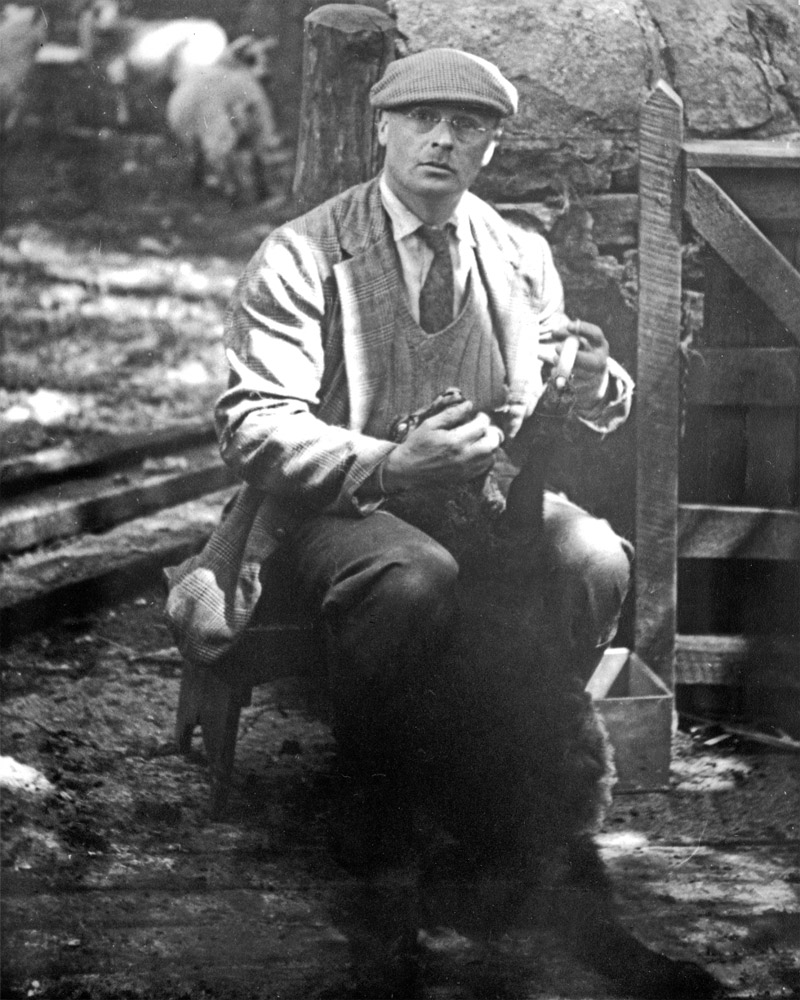 After Hildy left
Winshields (see his story) ,
Dick farmed it on his own. Though he was very much a "hands-on" farmer
and rarely took a holiday, he did find opportunities to enjoy a little
shooting, both grouse and pheasant, and from time to time some fishing.
Also, in later years he got involved locally, first as a parish
councillor and later as a member of his rural district council (RDC).
After Hildy left
Winshields (see his story) ,
Dick farmed it on his own. Though he was very much a "hands-on" farmer
and rarely took a holiday, he did find opportunities to enjoy a little
shooting, both grouse and pheasant, and from time to time some fishing.
Also, in later years he got involved locally, first as a parish
councillor and later as a member of his rural district council (RDC).
Dick
did not serve in the Forces during WW II; instead, he was a member of
the Northumberland Special Constabulary for which he received a medal
when the war ended. Amongst other things, this seems to have involved
him acting as the local Air Raid Precaution Warden and checking that
neighbouring farms and houses were properly "blacked out" at night. A
more exciting assignment arose in 1944, when he was called out to find
and recapture some Italian prisoners of war who had escaped from a
local POW camp and went off armed with his 12-bore shotgun to search,
without success as it turned out, his allotted area of Northumbrian
countryside.
Dick stood for the Henshaw ward as a "Progressive"
in the first post-war RDC elections in April 1946. In a 75% poll, Dick
beat the Socialist contender by 205 votes to 139 and started a
seven-year stint in local politics. As Henshaw was mainly a mining
community, Dick did well to be elected there as the tide was running
strongly for the Socialists after the war; he was successful because he
was well-known to the male electors, having spent much time over the
years in the local pubs, and stood, despite the "Progressive" label, as
an independent (i.e. one without affiliations to the Conservative or
Labour parties).
In 1949, Dick was voted Chairman of the
Haltwhistle Rural District Council, ousting, to everyone's surprise,
the previous Labour chairperson of some years standing by one vote. The
latter, a Miss Margaret Fleming, was the leading light in the local
Labour Party, having been at one time the local secretary and also
being then the district's member of the County Council. Dick and Miss
Fleming had many disagreements on council policy but Dick was good at
chairing meetings and reconciling opposing factions and, as a result,
he was re-elected Chairman each year until he stood down from the
Council in June 1952. He never involved himself in local politics again.
Ironically,
on becoming Chairman, Dick found himself an ex-officio member of the
local Bench that two years earlier had fined him £6 for killing a pig
without the necessary licence required by the post-war food regulations.
After
Winshields was sold in 1955, he, Phyllis and Dick, senior, moved to
Tirril Lodge near Penrith where he started deep litter, egg production
in one of the large barns there, which he carried on for some years
until egg prices made it uneconomic. Otherwise, he spent his time
keeping the property's formal garden immaculate and growing vegetables
and fruit in its sizeable, walled kitchen garden. By 1978 when his
father died, Dick was finding the gardens too much to cope with on his
own and he and Phyllis decided to move out of the house to a much
smaller property, which Phyllis had acquired a year or two earlier in
the centre of Tirril village. It was known as Smithy Cottage. It was
here that Dick died quite suddenly on New Year's Day 1988. He was 81
years of age. 42,144,180,181,182,183,184
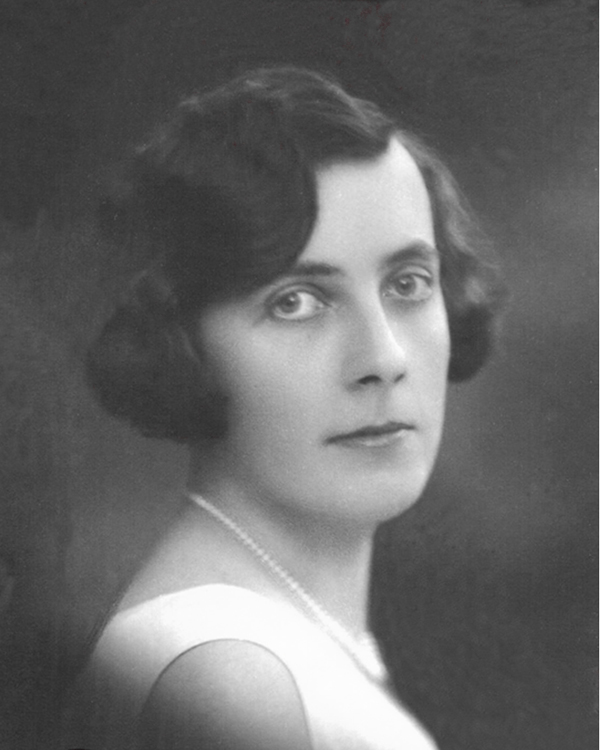
Dick married Phyllis Hildegarde Wancke,135 daughter of Elof Ulrik Wancke and Jessie Clark, on 4 Jun 1932 in Christ Church, Bishopwearmouth, Co. Durham 133.,134 Phyllis was born on 14 Nov 1908 in 5 Woodside, Sunderland, Co. Durham,185 was baptised on 15 Nov 1908 in Christ Church, Bishopwearmouth, Co. Durham,186 and died on 4 Jan 1994 in Penrith, Cumberland 135 aged 85.
Phyllis's father was a native of Karlshamn in southern Sweden who came to England in the early 1870s and settled in the northeast. Initially, he had a business importing Scandinavian timber for the coalmines in Durham and Northumberland but he later became a general timber merchant based in Sunderland where he was also the Swedish consul for many years. Rather late in life (he was 52 years old) he married Phyllis's mother whose grandfather had founded the celebrated Sunderland marine engine firm known as George Clark & Co.
Phyllis' and
Dick's wedding was reported in a local newspaper:-
|
SUNDERLAND
BRIDE
HONEYMOON TO BE SPENT IN PARIS The
wedding took place at Christ Church, Sunderland, on Saturday, of Miss
Phyllis Hildegarde Wancke, twin daughter of Mr and Mrs E U Wancke of
the The Laurels, Sunderland, and Mr Richard Vidal Green, son of Mr and
Mrs R J Green of Grange Terrace, Sunderland and Winshields, Bardon
Mill.
Given way by her father, the bride wore a dress of old Brussels lace over satin, with a veil lent by the mother of the bridegroom. Her flowers were pink roses. She was attended by Miss Christine Wancke (twin sister), Miss [Flavia] Du Pre [Lance], of Heathfield, Sussex; Miss Barbara Hett, of Darlington; and Miss Emily Smith of Stockholm, who all wore apple-green lace dresses and green floral headdresses and carried bouquets of sweet peas. Mr H V Green (brother of the bridegroom) was best man, and Mr Alan Wancke (brother of the bride), Mr Ralph Powell (cousin of the bride), and Dr Frank Hubbersty were ushers. After a reception at the home of the bride's parents, the bride and bridegroom left for a honeymoon in Paris. 187 |
+ 22 F
i. Rosemary
Margaret Green
+ 23 M
ii. John
Richard Ulrich Green
+ 24 M iii. Michael William Green

 Sixth
Generation
Sixth
Generation 
19. Pamela Rose Elkins-Green was born in 1934 in Dudley, Staffordshire 173 and died in 31 Mar 2013 aged 79.
Pam spent 30 years or so living in the parish of Framley at Park Farm and following her death, the Framley Church news sheet carried this report of her funeral, which gives some idea of her involvement with the local community over those years.
|
FRANKLEY
CHURCH NEWS — St
Leonard's - St Christopher's — May 2013
Pamela
Rose Clarke. A full church turned out on
Thursday 18th April to bid a
fond farewell to Pam after her death on the morning of Easter Day.
Family members followed the hearse down from Park Farm in a very
dignified way reminiscent of her husband Gordon's funeral and they were
joined in church by others. These included, the local farming
community, our church, WI and old friends from some of the many
organisations to which she had belonged including the Saint Leonard's
Lunch Club, drama group and Young Farmers. Pam was very knowledgeable
about this area and was dedicated to the farming life. Her family
members paid several beautiful tributes including readings from
grandchildren. We send our love and prayer to Philip and Rosemary and
the family.
|
Pamela married Gordon Eric Clarke, 192 son of Eric Charles Clarke and Gertrude May Riley, in Mar 1958 in Harefield Church, Uxbridge.174 Gordon was born on 5 Feb 1933 in Noah's Ark Farm, Uttoxeter, Staffs 99,193 and died on 7 Jul 1997 in Birmingham, Warwickshire 193 aged 64.
Children from this marriage were:
25 M i. Philip Gordon Clarke
Bonny married Graham
Alan Ward,194
son of Richard Alan Ward and Daisy Graham.
Graham was born on 6 Sep 1934 in Ilford Maternity Home, Ilford, Essex 99
and died on 8 Jan 2010 in Meldreth, Cambridgeshire 195
aged 75.
Children from this marriage were:
27 M i. Richard Haynes Ward
21. Anthony
George Haynes Elkins-Green
was born in 1936 in Wolverhampton, Staffordshire.178
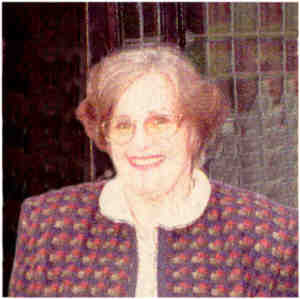 Anthony
married Enid Marion Clack 196
in 1961 in Harefield Church, Uxbridge.179
The marriage ended in Divorce. Enid was born on 12 Sep 1935 in
Brentford, Middlesex 197,198
and died on 3 Nov 1999 in Surrey 99,197
aged 64.
Anthony
married Enid Marion Clack 196
in 1961 in Harefield Church, Uxbridge.179
The marriage ended in Divorce. Enid was born on 12 Sep 1935 in
Brentford, Middlesex 197,198
and died on 3 Nov 1999 in Surrey 99,197
aged 64.
Children from this marriage were:
+ 29 M
i. Timothy
Haynes Elkins-Green was born on 17 May 1964,199
died on 13 May 1991 199
aged 26, and was buried on 22 May 1991.199
+ 30 M
ii. Simon
John Elkins-Green
+ 31 F iii. Joanne Kate Elkins-Green
Anthony next married Una J M Atkins.
22.
Rosemary Margaret Green
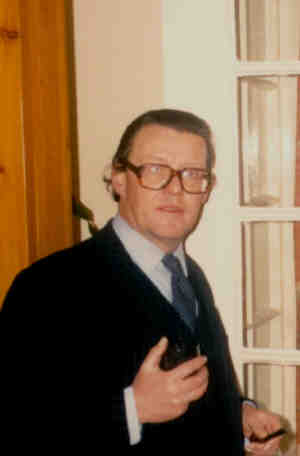
Rosemary married Jeremy Roland Crispin Marston,135
son of John Patrick Marston and Perdita à
Beckett Eccles Williams. Jeremy was born on 25 Oct 1937 in
Oxford, Oxfordshire and died on 26 Jun 1988 in Newcastle upon Tyne,
Northumberland 135,200
aged 50.
Rosemary and Jeremy had four children:
+ 32 F
i. Harriet
Victoria Marston
33 M ii. Charles Roland Cyril Marston
34 M iii. Guy Richard Patrick Marston
was born on 9 Jan 1971 and died on 13 Jan 1971.
+ 35 M iv. Edward Richard Patrick Marston
John married Linda
Graham-Young, daughter of Col. Iain Alistair Graham
Young, TD, JP and Grace Robertson Howie.
John and Linda had two daughters:
+ 36 F
i. Sally
Elizabeth Green
+ 37 F ii. Fiona Caroline Green
Michael married Diana
Lesley Hicks, daughter of Richard Redman Hicks
and Jane Newman.
Michael and Diana had two children:
+ 38 M
i. James
Richard Alexander Green
+ 39 F
ii. Veronica
Catherine Green
 Seventh
Generation
Seventh
Generation 
29. Timothy
Haynes Elkins-Green
was born on 17 May 1964,199
died on 13 May 1991 199
aged 26, and was buried on 22 May 1991.199
Timothy married Sarah
Catherine Spires.199 daughter of Isaac George Spires and Alexandra Joan Howe. Sarah
was born 5 Jul 1966 and died 20 Oct 2007 aged 41.
The child from this marriage was:
40 M i. Benjamin Haynes Elkins-Green
Simon married Laura
Alison Hogsflesh, daughter of Leslie E G Hogsflesh and Jacqueline M Cooper.
Simon and Laura had three children:
41 F i. Alysha Rose Elkins-Green
42 M ii. Harry Leslie H Elkins-Green
was born on 16 Mar 1995 in Haywards Heath, Sussex and died in Mar 1995
in Haywards Heath, Sussex.
Joanne married Adam
Phillip Shankster, son of George J Sankster and Pamela W Bundell.
Joanne and Adam had two children:
43 F i. Olivia Cydney Shankster
43a M ii. George ShanksterHarriet married Andrew
Edmund Armstrong Selous, son of Commander Gerald Maxwell Braddon Selous, R.N., O.B.E. and Mary Miranda Casey.
35. Edward
Richard Patrick Marston
Edward married Louisa
Jacobina Gray, daughter of Edward Joseph Gray
and Diana Jacobina Reid.
Sally married Timothy
Douglas Symington, son of Amyas John Symington
and Gillian Mary Darke.
Sally and Tim had four children:
46 F i. Anna Grace Symington
47 M ii. Matthew Douglas Symington
48 F iii. Lucy Rose Symington
49 F iv. Marina Caroline Symington
Fiona married Jon
Messent, son of Brian Eugene Messent and Jean
Black.
Fiona and Jon had two daughters:
50 F i. Sabina Marguerite
Messent
51 F ii. Gabriella Kristina Messent
38. James
Richard Alexander Green
James married Claire
Elizabeth Powell, daughter of Anthony Michael
Ardern Powell and Janet Clare Mather.
James and Claire had two sons:
52 M i. Alexander Richard James Green
53 M ii. Oscar Michael Robert Green
Veronica married
Timothy Paul Stuart Jones, son of Geoffrey Maurice
Jones
and Rosemary Pauline Grove.
Veronica and Tim have three sons:
54 M i. Henry Rupert Edgar Jones
55
M ii. Felix Sebastian Edmund
Jones
56 M iii. Rollo Magnus James Jones
 Eighth
Generation
Eighth
Generation 29. Benjamin
Haynes Elkins-Green
Ben married Amy Katharina Smith
Ben and Aymie have two daughters:
57 F i. Ariella Elkins-Green
58 F
ii. Effie Catherine Ekins-Green